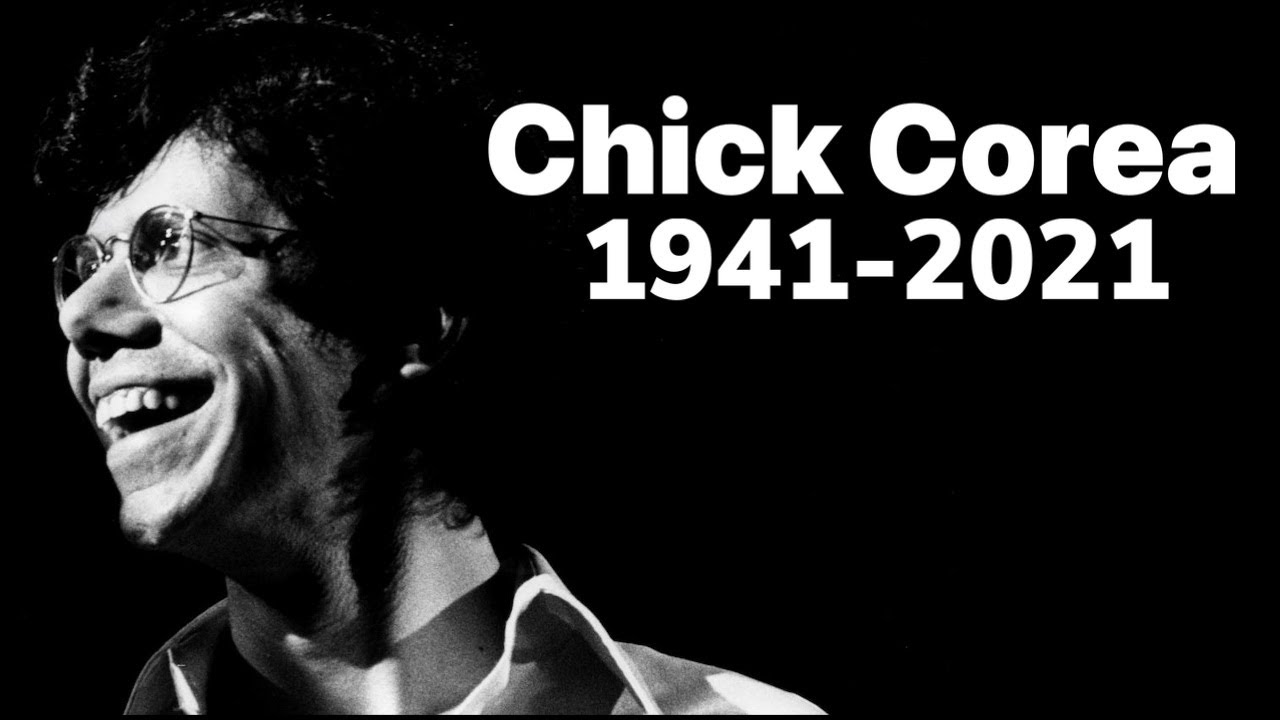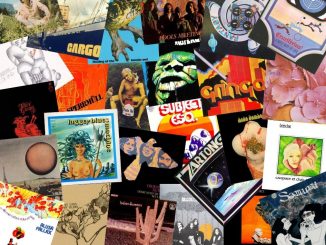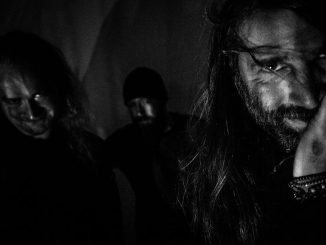by Kostas Barbas, Paris Gravouniotis, Dimitris Kaltsas, Petros Papadogiannis, Panos Papazoglou, Thanos Patsos, Goran Petrić, Tasos Poimenidis, Kostas Rokas, Thomas Sarakintsis, Panagiotis Stathopoulos
The truth is that all of us at Progrocks.gr have been looking forward to the fourth part of this article series. Thank you all very much for your feedback! It is more than encouraging knowing that many of our readers have been waiting for this as much as we have.
As we did in the first, the second and the third part, the “one-album wonders” are presented in no chronological order, but randomly and as in the first three parts, this article is a delightful journey back and forth in time and reading it will, hopefully, be as a fascinating experience as was writing every single piece.
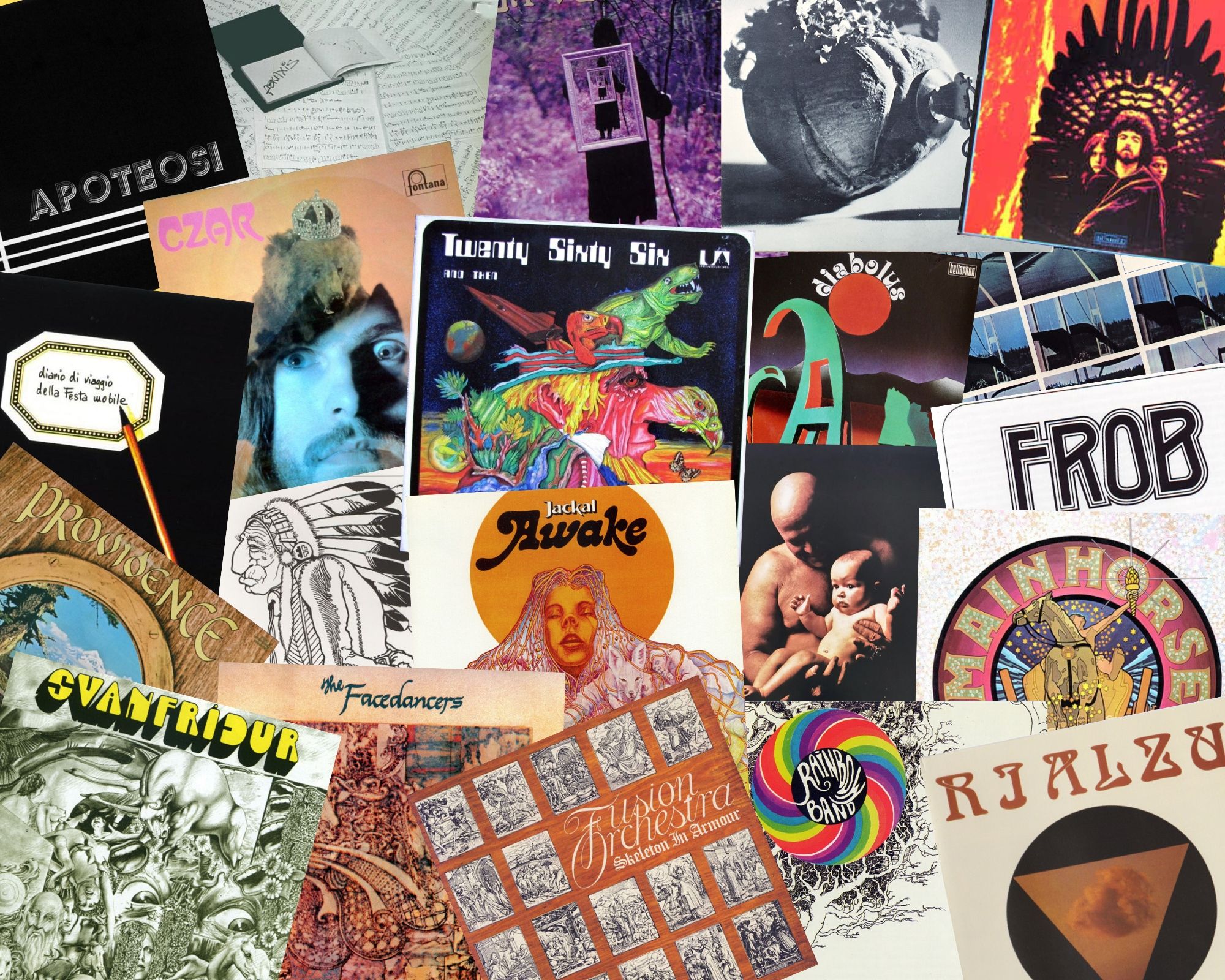
Festa Mobile – Diario di viaggio della Festa Mobile
[RCA Italiana, 1972]
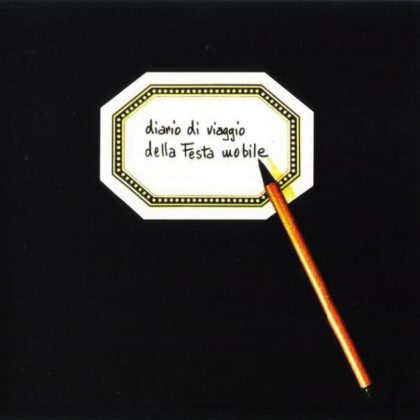 Festa Mobile was formed in Rome by brothers Giovanni (keyboards) and Francesco Boccuzzi (bass, keyboards) when they joined forces with their compatriot (from Apulia) Alessio Alba (guitar) as well as Renato Baldassarri (vocals) and Maurizio Cobianchi (drums). In 1973, Diario di viaggio della Festa Mobile was released. It is a fantasy concept album that chronicles the adventures of a comedy group as they return from the celebrations in honor of the oppressive king of the imaginary country Hon. The exciting changes of scenery are perfectly depicted through the lyrics and the lyrical symphonic progressive rock of Festa Mobile with traces of jazz, with energy and high level of technique dominating. The combination of stunning classical keyboard themes with an idiosyncratic, almost Fripp-like, hard guitar playing impresses to such an extent, that the 32 minutes of the album seem more than enough.
Festa Mobile was formed in Rome by brothers Giovanni (keyboards) and Francesco Boccuzzi (bass, keyboards) when they joined forces with their compatriot (from Apulia) Alessio Alba (guitar) as well as Renato Baldassarri (vocals) and Maurizio Cobianchi (drums). In 1973, Diario di viaggio della Festa Mobile was released. It is a fantasy concept album that chronicles the adventures of a comedy group as they return from the celebrations in honor of the oppressive king of the imaginary country Hon. The exciting changes of scenery are perfectly depicted through the lyrics and the lyrical symphonic progressive rock of Festa Mobile with traces of jazz, with energy and high level of technique dominating. The combination of stunning classical keyboard themes with an idiosyncratic, almost Fripp-like, hard guitar playing impresses to such an extent, that the 32 minutes of the album seem more than enough.
After the disbandment of Festa Mobile, the Boccuzzi brothers formed the jazz-rock / fusion proggers Il Baricentro in their homeland, Bari, and released two excellent albums, Sconcerto (1976) and Trusciant (1978). Francesco then moved to the United States, and Giovanni works as a composer, professor and writer to this day, while Alessio Alba specialized in Indian music and became an expert on ethnic instruments such as the sarod.
Náttúra – Magic Key
[Nattura Records, 1972]
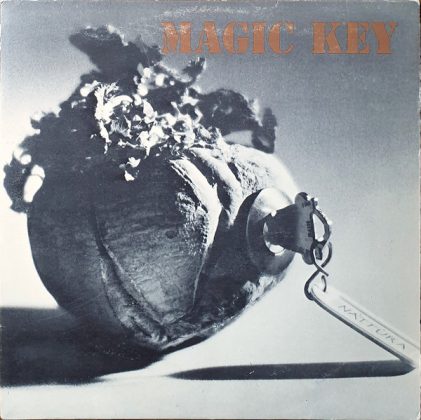 The pioneering Icelandic band Náttúra was formed in 1969 and quickly gained great reputation on the island playing in local clubs. In 1971, the band line-up changed significantly, mainly with the entry of American singer Shady Owens. In October 1972 they traveled to England and recorded Magic Key at Orange Studios, which was self-released on December 12 of that year.
The pioneering Icelandic band Náttúra was formed in 1969 and quickly gained great reputation on the island playing in local clubs. In 1971, the band line-up changed significantly, mainly with the entry of American singer Shady Owens. In October 1972 they traveled to England and recorded Magic Key at Orange Studios, which was self-released on December 12 of that year.
The sole album of Náttúra features a very special mix of warm psychedelic rock with complex prog parts and pop philosophy with very good playing level, both in the smooth and hard / heavy parts. The tracks, which convince that this is a British band with a strong Curved Air (and not only) influence, differ a lot, showcasing the multi-faceted musical character of the band, but simultaneously sacrificing the flow of the album, which is strangely impressive and impressively discontinuous at the same time.
Náttúra split up in 1973. After that, Björgvin Gíslason (guitar, flute) played with Svanfríður and then reunited with Pétur Kristjánsson, former singer of Náttúra, in Pelican and then in Paradís. Karl J. Sighvatsson (ex Trúbrot) became the leading figure in the legendary Hinn leslenski þursaflokkur, bassist Sigurður Árnason played in Jónas og Einar’s excellent folk rock album (Gypsy Queen – 1972), and Shady Owens (ex Trúb) pursued a solo career.
Bangor Flying Circus – Bangor Flying Circus
[ABC/Dunhill Records, 1969]
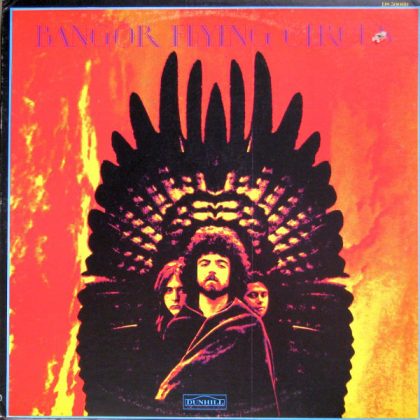 After the end of H.P. Lovecraft, drummer Mike Tegza formed Bangor Flying Circus along with David Wolinski on keyboards, bass, vocals and Alan DeCarlo on guitar and vocals, and in 1969 they released their self-titled album. The sound of the band from Chicago can not be described as pure progressive rock, as there was not a prog scene in the USA in the late 60s and on the other hand the influences came mainly from psychedelic rock, blues and jazz. In short, the music of Bangor Flying Circus lies somewhere in between: a psych / prog amalgam with lots of jazz touches. The wonderful melodies of Violent Man bring H.P. Lovecraft and Vanilla Fudge to mind, and tracks such as Concerto Four Clouds and Someday I’ll Find are pretty similar. The more psychedelic Come On People and Mama Don’t You Know coexist with the jazzier Ode To Sadness and A Change in Our Lives, proving the album’s stylistic diversity, while the finale with the excellent In The Woods and the amazing 6-minute cover of The Beatles’ Norwegian Wood couldn’t be more perfect. After Bangor Flying Circus split up, Wolinski and DeCarlo formed Madura (you should check their 1971 debut).
After the end of H.P. Lovecraft, drummer Mike Tegza formed Bangor Flying Circus along with David Wolinski on keyboards, bass, vocals and Alan DeCarlo on guitar and vocals, and in 1969 they released their self-titled album. The sound of the band from Chicago can not be described as pure progressive rock, as there was not a prog scene in the USA in the late 60s and on the other hand the influences came mainly from psychedelic rock, blues and jazz. In short, the music of Bangor Flying Circus lies somewhere in between: a psych / prog amalgam with lots of jazz touches. The wonderful melodies of Violent Man bring H.P. Lovecraft and Vanilla Fudge to mind, and tracks such as Concerto Four Clouds and Someday I’ll Find are pretty similar. The more psychedelic Come On People and Mama Don’t You Know coexist with the jazzier Ode To Sadness and A Change in Our Lives, proving the album’s stylistic diversity, while the finale with the excellent In The Woods and the amazing 6-minute cover of The Beatles’ Norwegian Wood couldn’t be more perfect. After Bangor Flying Circus split up, Wolinski and DeCarlo formed Madura (you should check their 1971 debut).
Apoteosi – Apoteosi
[Said Record, 1975]
 Apoteosi, a band from Calabria with a Greek name and a strong Greek element, was formed in 1974 by the three Idà brothers, the then 14-year-old (!) Massimo (keyboards, piano), Silvana (vocals) and Frederico (bass, died in 1992) along with Franco Vinci (guitar, vocals) and Marcello Surace (drums), while the production was undertaken by the father of three brothers, Salvatore Idà. Apoteosi follows in the footsteps of prog giants PFM, ELP and Genesis without deviating much. However, the quality of the compositions is very impressive, especially considering the very young age of the band members. Massimo Idà was a child prodigy with amazing sound and high level of technique, while Franco Vinci’s guitar playing sounds like the great Franco Mussida (PFM). Silvana Idà’s voice is unique and ties in perfectly with the quieter, dreamy parts with flute and acoustic guitars. The switch of emotions and the superb instrumental passages give variety to the album, the sound of which is absolutely representative of Rock Progressivo Italiano. After Apoteosi broke up, all members continued playing and recording music.
Apoteosi, a band from Calabria with a Greek name and a strong Greek element, was formed in 1974 by the three Idà brothers, the then 14-year-old (!) Massimo (keyboards, piano), Silvana (vocals) and Frederico (bass, died in 1992) along with Franco Vinci (guitar, vocals) and Marcello Surace (drums), while the production was undertaken by the father of three brothers, Salvatore Idà. Apoteosi follows in the footsteps of prog giants PFM, ELP and Genesis without deviating much. However, the quality of the compositions is very impressive, especially considering the very young age of the band members. Massimo Idà was a child prodigy with amazing sound and high level of technique, while Franco Vinci’s guitar playing sounds like the great Franco Mussida (PFM). Silvana Idà’s voice is unique and ties in perfectly with the quieter, dreamy parts with flute and acoustic guitars. The switch of emotions and the superb instrumental passages give variety to the album, the sound of which is absolutely representative of Rock Progressivo Italiano. After Apoteosi broke up, all members continued playing and recording music.
Svanfriður – What’s Hidden There?
[Self-released, 1972]
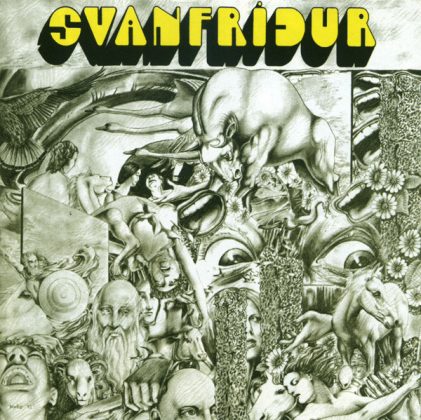 The heyday of the British rock scene in the late 60s-early 70s influenced northern European countries greatly, even the distant Iceland. Svanfriður released their only album in 1972, which was recorded in London. The album’s nine songs could belong to a British band of the time. How can an album that starts with such a beautiful guitar theme like the one in Woman of Our Day and with such a memorable vocal line in its chorus be bad? The Mug is also a great song, as it embodies the style of Jethro Tull, whereas the title track is gentle and the use of the violin flirts with folk. Apart from these, there are passionate compositions, deeply influenced by Cream and Peter Green era Fleetwood Mac, among others. The ending comes with Finido, an instrumental orgy with a beautiful violin attacking theme.
The heyday of the British rock scene in the late 60s-early 70s influenced northern European countries greatly, even the distant Iceland. Svanfriður released their only album in 1972, which was recorded in London. The album’s nine songs could belong to a British band of the time. How can an album that starts with such a beautiful guitar theme like the one in Woman of Our Day and with such a memorable vocal line in its chorus be bad? The Mug is also a great song, as it embodies the style of Jethro Tull, whereas the title track is gentle and the use of the violin flirts with folk. Apart from these, there are passionate compositions, deeply influenced by Cream and Peter Green era Fleetwood Mac, among others. The ending comes with Finido, an instrumental orgy with a beautiful violin attacking theme.
The album sold only a few hundred copies and fatally the band split up in mid-1973. After that, Pétur Kristjánsson (ex singer of Náttúra) became a founding member of Pelican, he reunited with Svanfriður bassist Gunnar Hermanís in Paradís, and unfortunately died of a heart attack on September 3, 2004.
Jackal – Awake
[Periwinkle Records, 1973]
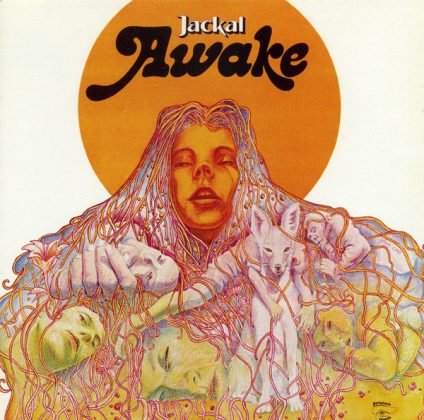 Jackal was formed in Toronto, Canada by the Kellesis brothers (probably of Greek descent) in 1969. After a series of live appearances that secured them a record deal, they released their first and only album, Awake, in 1973, which included 8 songs and 40 minutes of music.
Jackal was formed in Toronto, Canada by the Kellesis brothers (probably of Greek descent) in 1969. After a series of live appearances that secured them a record deal, they released their first and only album, Awake, in 1973, which included 8 songs and 40 minutes of music.
The first two wonderful songs graft acid rock with strong British heavy rock influences, with the keyboards of the main composer, Chris Kellesis, at the forefront, as in the whole album. The opener At the Station had all it took to gain them some commercial success, but this was never achieved. As the album progresses, things change towards British blues and prog rock and the band unfolds all its virtues, with the leading keys and the discreet guitar phrases raising the level of the compositions. In the wonderful How Time Has Flown, the keyboard themes bring Deep Purple and Uriah Heep to mind, with a strong dose of British prog. The group’s progressive mood successfully combines the magnificent British rock of the time, filtered by the influences of psychedelia and bands such as Electric Prunes, 13th Floor Elevators and The Doors.
Unfortunately, the lack of commercial interest gradually led to the disbandment of Jackal and all members abandoned the music business.
Fusion Orchestra – Skeleton in Armour
[EMI, 1973]
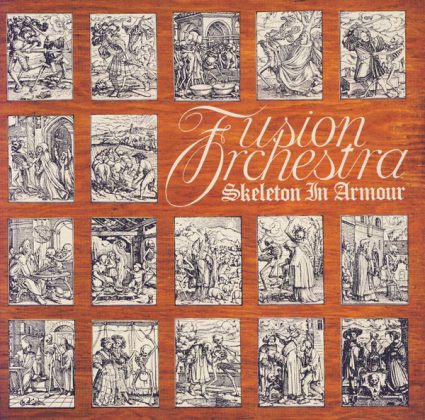 Lasting only 5 years, Fusion Orchestra formed in 1969 in London and disbanded in early 1975 after nearly 500 professional shows and a highly eclectic, yet powerful release, Skeleton in Armour (1973). The band’s “classic” line-up was formed in 1972 with the addition of Dave Cowell on bass who brought together more ambition, leading the band to further sophistication in rock and jazz themes. This led to the band’s only release (through EMI!) and a reputation of energetic and storming performers on stage. Their high point was playing in front of a 50,000+ crowd at the Scheessel Rock Festival in northern Germany in 1973.
Lasting only 5 years, Fusion Orchestra formed in 1969 in London and disbanded in early 1975 after nearly 500 professional shows and a highly eclectic, yet powerful release, Skeleton in Armour (1973). The band’s “classic” line-up was formed in 1972 with the addition of Dave Cowell on bass who brought together more ambition, leading the band to further sophistication in rock and jazz themes. This led to the band’s only release (through EMI!) and a reputation of energetic and storming performers on stage. Their high point was playing in front of a 50,000+ crowd at the Scheessel Rock Festival in northern Germany in 1973.
Often associated with the sound of Babe Ruth (par the Spanish guitar), Skeleton in Armour boasts of character and personality mixing the female vocal-led, guitar-based and hard rockin’ sound with jazzy psych / prog rock of the highest calibre. The album is celebrated as a rare find of the best era in prog rock.
After disbanding, singer / flautist Jill Saward became a solo artist but also played in jazz funk act Shakatak, while guitarist Colin Dawson formed Fusion Orchestra 2 in 2009 (Dave Cowell joined him for a short stint) and released Casting Shadows in 2013 in the same vein and highly recommended to fans of the original material.
Capitolo 6 – Frutti Per Kagua
[it, 1972]
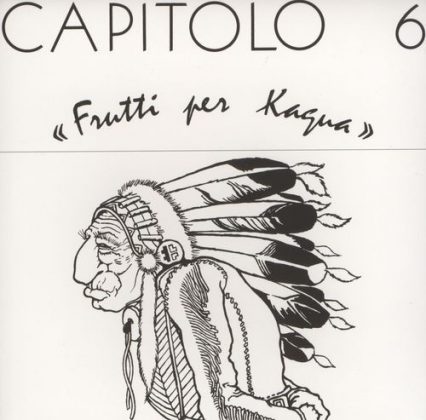 The quintet of Capitolo 6 was formed in 1969, when two ex members of Gli Eremiti (from Viareggio) joined I Rangers (from Livorno). Capitolo 6 signed with RCA and set up base in Rome in 1970.
The quintet of Capitolo 6 was formed in 1969, when two ex members of Gli Eremiti (from Viareggio) joined I Rangers (from Livorno). Capitolo 6 signed with RCA and set up base in Rome in 1970.
In 1971, their first single was released and the band participated in famous Italian festivals, and was the support act at a Led Zeppelin concert. Unfortunately, the band line-up was not stable, and they appear on TV as a quartet. In the midst of all this, Frutti Per Kagua was released in 1972. The first side includes the epic title track, a mix of heavy guitar, with a strong flute presence and vocals sang in Italian. On the second side, there are three equally characteristic songs, which however do not reach the level of the album opener.
After that, two more singles were released, but the band split up before the end of the year, as they failed to reach success. Since then, their traces have been lost, except for keyboardist Antonio Favila who joined Campo Di Marte and died in the early 1990s. Even original keyboardist Jimmy Santerini died, of leukaemia, in 1977. Another case of a troubled band that left us with a remarkable release from the golden age of Rock Progressivo Italiano.
Rainbow Band – Rainbow Band
[Sonet, 1970]
 When Rainbow Band was formed in the early 1970s in Copenhagen, most of its members were already renowned musicians. Peer Frost (guitar) was a member of the legendary Young Flowers, Bent Hesselmann (winds) and Lars Bisgaard (vocals) were in Maxwells, while Niels Brønsted (piano) had collaborated with the great jazzman Albert Ayler. Their self-titled album was recorded in July-August and was released in December 1970 by Sonet, but the replacement of Bisgaard by Allan Mortensen led to the re-recording of the album, with minor changes to the tracks and the (unjustified) replacement of Rainbow Song with Sippin’ Wine. Mortensen may have been a much better singer than Bisgaard, but the warmth of the sound and the underground character of the original recording are missing from the 1971 release.
When Rainbow Band was formed in the early 1970s in Copenhagen, most of its members were already renowned musicians. Peer Frost (guitar) was a member of the legendary Young Flowers, Bent Hesselmann (winds) and Lars Bisgaard (vocals) were in Maxwells, while Niels Brønsted (piano) had collaborated with the great jazzman Albert Ayler. Their self-titled album was recorded in July-August and was released in December 1970 by Sonet, but the replacement of Bisgaard by Allan Mortensen led to the re-recording of the album, with minor changes to the tracks and the (unjustified) replacement of Rainbow Song with Sippin’ Wine. Mortensen may have been a much better singer than Bisgaard, but the warmth of the sound and the underground character of the original recording are missing from the 1971 release.
The high level of technique and the excellent arrangements are impressive for a 1970 release. The rich mix of early progressive rock, psychedelia, blues rock and jazz-rock that marked that transitional period may have a great historical significance, covering a huge range of music genres, but overall the album is deprived of homogeneity.
The band was forced to change name in july 1971 as a Canadian psych / folk band had the rights to their original name. Thus began the story of Midnight Sun.
Czar – Czar
[Fontana, 1970]
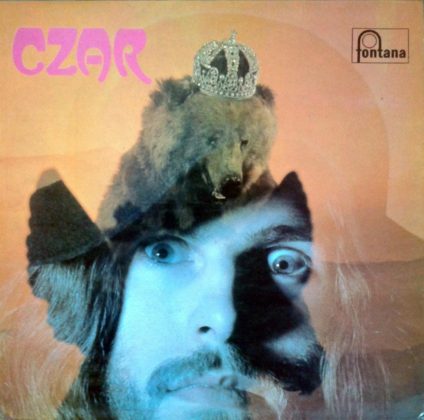 Czar came to life when Tuesday’s Children, a band that released a series of pop singles in the late 60s, changed their name. In their self-titled album, they drastically changed their musical style, joining the explosion of British progressive rock. Czar is a very typical example of the transition from psychedelia to prog rock, and it also sounds quite heavy for a 1970s release, essentially infusing much of the new trends of the time. The compositions are based on the creation of a soundwall of keys and guitars, while the adventurous structure and playing intensity do not rule out a melodic psych pop touch, especially in vocals. The duration of the songs varies from three to eight minutes, with Tread Softly on My Dreams impressively opening the record, while the extensive Cecelia and A Day in September also stand out. Unfortunately, that was Czar’s only full-length album. The re-release includes the single Oh Lord I’m Getting Heavy, which was also released the same year, as well as a five-track demo that wasn’t included in the album. After their disbandment, the four members rarely participated in other bands, most notably Paul Kendrick in Tucky Buzzard.
Czar came to life when Tuesday’s Children, a band that released a series of pop singles in the late 60s, changed their name. In their self-titled album, they drastically changed their musical style, joining the explosion of British progressive rock. Czar is a very typical example of the transition from psychedelia to prog rock, and it also sounds quite heavy for a 1970s release, essentially infusing much of the new trends of the time. The compositions are based on the creation of a soundwall of keys and guitars, while the adventurous structure and playing intensity do not rule out a melodic psych pop touch, especially in vocals. The duration of the songs varies from three to eight minutes, with Tread Softly on My Dreams impressively opening the record, while the extensive Cecelia and A Day in September also stand out. Unfortunately, that was Czar’s only full-length album. The re-release includes the single Oh Lord I’m Getting Heavy, which was also released the same year, as well as a five-track demo that wasn’t included in the album. After their disbandment, the four members rarely participated in other bands, most notably Paul Kendrick in Tucky Buzzard.
Frob – Frob
[Musikladen, 1976]
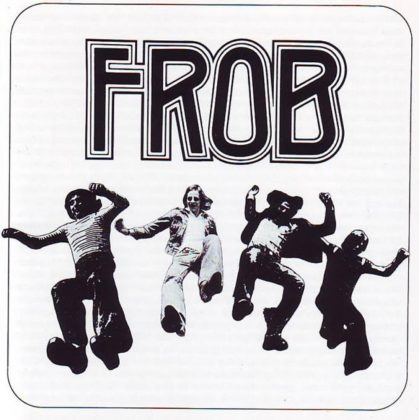 Frob is another case of a band revival undertaken by Garden Of Delights with its classic re-releases of hard-to-find, forgotten albums originally released in the 70’s. As many other acts of the time, they also released only one album, and were one of the many bands that were part of the German psychedelic – jazz – progressive music production, and certainly are a case worth mentioning.
Frob is another case of a band revival undertaken by Garden Of Delights with its classic re-releases of hard-to-find, forgotten albums originally released in the 70’s. As many other acts of the time, they also released only one album, and were one of the many bands that were part of the German psychedelic – jazz – progressive music production, and certainly are a case worth mentioning.
The sound of the band from Westphalia was closer to Out of Focus than to the typical krautrock field. French guitarist Philippe Caillat – pretty unusual for a German band of the time – had a central role in Frob which he joined in 1975 seeing the band live. Of course, the keys and the piano lead the compositions with an improvisational spirit which is really impressive. And after overlooking the oddly indifferent cover (compared to other albums of the time), the jazz-rock / fusion logic that permeates the album is perceived from the beginning with the uplifting mood of the opener, Wassertropfen, while Locomotive is also a very good track that showcases the talent of the four musicians.
After the release of their only album in 1976, they split up, the four members followed different paths, and Frob never reunited.
Rialzu – Rialzu
[Ricordu, 1978]
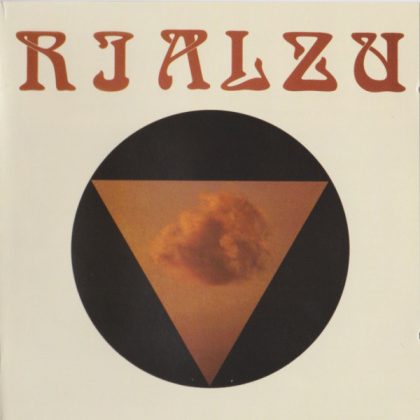 Corsica is not among the geographic centers of French progressive rock. However, an underground band made its appearance in the late 70s with all its six members coming from the homeland of Napoleon Bonaparte. Rialzu, whose self-titled album was released in 1978 in just 1000 vinyl copies by the obscure Ricordu, became relatively known to prog listeners 30 years later with the reissue by Soleil Zeuhl. The Corsican sextet had guitar, keyboards, violin, bass, drums and three backing vocalists in its music arsenal, while all the lyrics, the band’s name and the titles of the songs were written in the Corsican dialect. Deeply influenced by the great Magma, as well as fusion and symphonic prog, they gave us an excellent album that sounds rich and dense, full of beautiful melodies and haunted atmospheres. U Rigiru, which covers the entire first side with its 16 minutes, is one of the highlights of the zeuhl sound, while the second side with the 11-minute I Lagramanti and the finale of A Mubba is equally impressive, focusing more on the band’s darker side. After the disbandment of Rialzu, Jean-Philippe Gallet played saxophone and sang in the debut album of zeuhl band Musique Noise (Fulmines Regularis – 1988).
Corsica is not among the geographic centers of French progressive rock. However, an underground band made its appearance in the late 70s with all its six members coming from the homeland of Napoleon Bonaparte. Rialzu, whose self-titled album was released in 1978 in just 1000 vinyl copies by the obscure Ricordu, became relatively known to prog listeners 30 years later with the reissue by Soleil Zeuhl. The Corsican sextet had guitar, keyboards, violin, bass, drums and three backing vocalists in its music arsenal, while all the lyrics, the band’s name and the titles of the songs were written in the Corsican dialect. Deeply influenced by the great Magma, as well as fusion and symphonic prog, they gave us an excellent album that sounds rich and dense, full of beautiful melodies and haunted atmospheres. U Rigiru, which covers the entire first side with its 16 minutes, is one of the highlights of the zeuhl sound, while the second side with the 11-minute I Lagramanti and the finale of A Mubba is equally impressive, focusing more on the band’s darker side. After the disbandment of Rialzu, Jean-Philippe Gallet played saxophone and sang in the debut album of zeuhl band Musique Noise (Fulmines Regularis – 1988).
Rustichelli e Bordini – Opera Prima
[RCA, 1973]
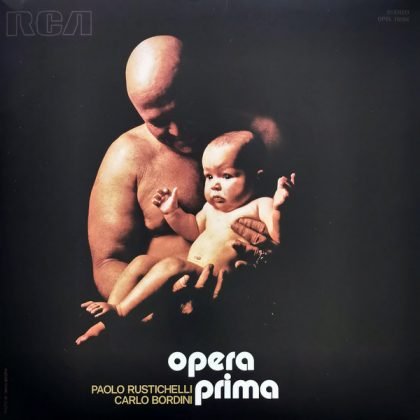 In 1973, when the expressive virtues of progressive rock musicians were at their peak in various parts of Europe, another peculiar album was delivered from Italy, with a strong RPI flavor, which was coordinated with the international development of the genre.
In 1973, when the expressive virtues of progressive rock musicians were at their peak in various parts of Europe, another peculiar album was delivered from Italy, with a strong RPI flavor, which was coordinated with the international development of the genre.
With the timbres of various keyboards and percussion instruments used to set their inspirations, Paolo Rustichelli and Carlo Bordini, left their short-lived band Cammello Black, and carved the rich musical mosaic of Opera Prima. The origins of the duet’s music may obviously lie in British prog, mainly Emerson Lake and Palmer, but the duet’s symphonic rock also bears an Italian character from start to end. An elegant, round, romantic, slightly nervous melody, released from hammond, mellotron, synths and piano, operates decisively on the bridge between classical, pop and rock perception. As for the rhythms, they are most often ecstatic and the vocals are pompous, operatic, rock in nature, without always being successful.
After Opera Prima, Rusticelli joined the band Oliver, which would shortly after become the famous Goblin (without Rusticelli), but in the meantime they released an album as Cherry Five, with Bordini in the line-up!
Twenty Sixty Six and Then – Reflections on the Future
[United Artists Records, 1972]
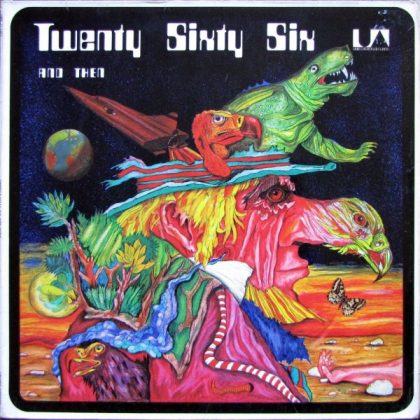 What does the Battle of Hastings have to do with one of the most complete and lavish heavy prog albums of all time? Twenty Sixty Six and Then were formed in Mannheim in 1971 with Geff Harrison (the only non German member) on vocals and were inspired by the historic battle of 1066 between the English and the Normans, adding one millennium. The striking thing about them was that they had two very talented keyboard players covering all the main instruments of the era (Mellotron, organ, electric piano, synths). Combined with Geff Harrison’s characteristic superb hoarse voice and Gerhard Mrozeck’s impressive guitar performance, the five compositions of Reflections οn the Future comfortably enter the pantheon of the then thriving German scene. From the extremely heavy opener At My Home to the beloved Autumn (there is a proto-prog metal guitar riff here), and from the psychedelic extensions of Butterfly and How Do You Feel to the 16-minute title track that includes all of the above, we come to the conclusion that we are dealing with a masterpiece. After their disbandment, Geff Harrison continued more actively, participating in two Kin Ping Meh albums and pursuing a solo career.
What does the Battle of Hastings have to do with one of the most complete and lavish heavy prog albums of all time? Twenty Sixty Six and Then were formed in Mannheim in 1971 with Geff Harrison (the only non German member) on vocals and were inspired by the historic battle of 1066 between the English and the Normans, adding one millennium. The striking thing about them was that they had two very talented keyboard players covering all the main instruments of the era (Mellotron, organ, electric piano, synths). Combined with Geff Harrison’s characteristic superb hoarse voice and Gerhard Mrozeck’s impressive guitar performance, the five compositions of Reflections οn the Future comfortably enter the pantheon of the then thriving German scene. From the extremely heavy opener At My Home to the beloved Autumn (there is a proto-prog metal guitar riff here), and from the psychedelic extensions of Butterfly and How Do You Feel to the 16-minute title track that includes all of the above, we come to the conclusion that we are dealing with a masterpiece. After their disbandment, Geff Harrison continued more actively, participating in two Kin Ping Meh albums and pursuing a solo career.
Abraxis – Abraxis
[International Bestseller Company, 1977]
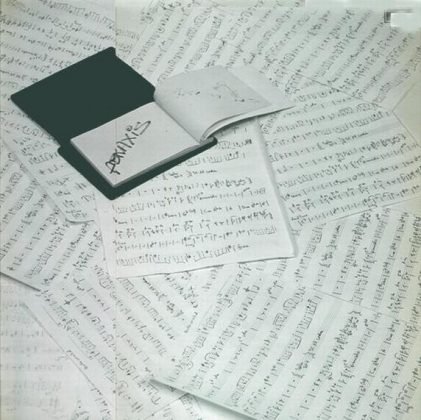 Abraxis is one of the most unknown supergroups of the 70s. With the exception of session guitarist Paul Elias, the professional experience of the rest is in itself a testament to a great historical injustice, probably due to the fact that the Belgian band had been active for less than two years. Charles Loos (keyboards) and Jean-Paul Musette (bass) who led the band and wrote all the music played together in the great Cos, flutist Dirk Bogaert and drummer Jack Mauer were members of progressive legends Waterloo and Pazop, while Tony Malisan, who plays drums on most tracks, was a member of the excellent Esperanto.
Abraxis is one of the most unknown supergroups of the 70s. With the exception of session guitarist Paul Elias, the professional experience of the rest is in itself a testament to a great historical injustice, probably due to the fact that the Belgian band had been active for less than two years. Charles Loos (keyboards) and Jean-Paul Musette (bass) who led the band and wrote all the music played together in the great Cos, flutist Dirk Bogaert and drummer Jack Mauer were members of progressive legends Waterloo and Pazop, while Tony Malisan, who plays drums on most tracks, was a member of the excellent Esperanto.
Abraxis’ music was basically perfectionistic jazz-rock / fusion with strong prog elements that mainly refer to the Canterbury sound and more specifically to Gilgamesh, National Health and Supersister, while the most improvised fusion parts are strongly influenced by Chick Corea. The best tracks on the album are Clear Hours, Valse de la mort / A boire / Et à / Manger and Sweetank, but there is not a single dull moment throughout the album.
After their disbandment, Loos reunited with Cos and then played with Nuit câline à la villa mon rêve and Julverne, while continuing his solo career.
Diabolus – Diabolus (High Tones)
[Bellaphon, 1972]
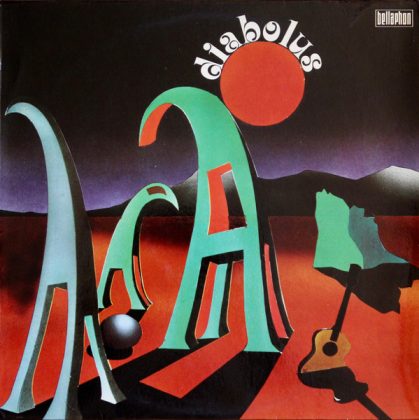 Diabolus is one of the cases of English / German bands that operated on German soil. They were created in the late 60’s by the British John Hadfield (guitar, vocals), Anthony Hadfield (bass, vocals), Philip Howard (keys, wind instruments, vocals) and the German Elwood Von Seibold (percussion). Their only album was released in 1972 and is one of the best hidden gems of the 70s. Their music is an amazing mix of British progressive rock, heavy prog and jazz-rock of the era with inventive transition between genres. Howard gives the impression that the band is a septet, as he plays jazz saxophone, prog folk flute or keyboards wherever needed, and even does overdubs in the stunning Lady of the Moon. The guitar solos are great, while the jazzy rhythm section shines everywhere. Diabolus’ music had an aura, with compositions and arrangements of a great band, and it seemed that the best was yet to come, but unfortunately they split up and the members disappeared forever from the music scene. In fact, according to sources, this material was probably their demo and they were unaware that it was released in Germany for more than thirty years, until 2005.
Diabolus is one of the cases of English / German bands that operated on German soil. They were created in the late 60’s by the British John Hadfield (guitar, vocals), Anthony Hadfield (bass, vocals), Philip Howard (keys, wind instruments, vocals) and the German Elwood Von Seibold (percussion). Their only album was released in 1972 and is one of the best hidden gems of the 70s. Their music is an amazing mix of British progressive rock, heavy prog and jazz-rock of the era with inventive transition between genres. Howard gives the impression that the band is a septet, as he plays jazz saxophone, prog folk flute or keyboards wherever needed, and even does overdubs in the stunning Lady of the Moon. The guitar solos are great, while the jazzy rhythm section shines everywhere. Diabolus’ music had an aura, with compositions and arrangements of a great band, and it seemed that the best was yet to come, but unfortunately they split up and the members disappeared forever from the music scene. In fact, according to sources, this material was probably their demo and they were unaware that it was released in Germany for more than thirty years, until 2005.
Déjà-Vu – Between the Leaves
[Self-released, 1976]
 Norwegian band Déjà-Vu was formed in 1975 by Svein Rønning and Knut Lie after they both left the band Høst. The album Between the Leaves was financed by the band and was initially released in 1976 as a small test pressing with a generic white cover and remained unknown even in Norway until Research label re-released it twenty years later on CD in memory of late vocalist Kai Grønlie. The band offers music with a strong personality, mixing symphonic prog a la Yes with early seventies hard blues. The compositions are the definition of excellence and the performance is beyond superb. Each song is loaded with emotional vocals and delicate arrangements. Not only there are no fillers, but there is absolutely no dull moment here either. The use of mellotron and synth is really exceptional. The keyboard melodies are divine and breathtaking especially in combination with the Hendrix-esqe guitar sound and the splendid rhythm section. From what is presented on the album, nothing suggests that they went unnoticed even in underground prog. For anyone who appreciates an artistic approach to music and 70s prog rock of the highest level, Between the Leaves has all the necessary requirements.
Norwegian band Déjà-Vu was formed in 1975 by Svein Rønning and Knut Lie after they both left the band Høst. The album Between the Leaves was financed by the band and was initially released in 1976 as a small test pressing with a generic white cover and remained unknown even in Norway until Research label re-released it twenty years later on CD in memory of late vocalist Kai Grønlie. The band offers music with a strong personality, mixing symphonic prog a la Yes with early seventies hard blues. The compositions are the definition of excellence and the performance is beyond superb. Each song is loaded with emotional vocals and delicate arrangements. Not only there are no fillers, but there is absolutely no dull moment here either. The use of mellotron and synth is really exceptional. The keyboard melodies are divine and breathtaking especially in combination with the Hendrix-esqe guitar sound and the splendid rhythm section. From what is presented on the album, nothing suggests that they went unnoticed even in underground prog. For anyone who appreciates an artistic approach to music and 70s prog rock of the highest level, Between the Leaves has all the necessary requirements.
Atlantic Bridge – Atlantic Bridge
[Dawn, 1970]
 Atlantic Bridge was a British band, formed as a quartet in the late 60s by pianist Mike McNaught, who in 1967 showed his love for The Beatles in Take a New Look at the Beatles with The London Jazz Four. It was an innovative approach to the material of their favorite band from a purely jazz perspective. His passion for The Beatles was also shown in the self-titled Atlantic Bridge album released in 1970. With the help of great musicians such as Mike Travis (drums – later a member of superb band Canterbury Gilgamesh, he also played in some Hugh Hopper albums), Jim Philip (saxophone, flute), virtuoso Daryl Runswick (bass – later a member of The Alan Parsons Project), they cover songs by Jimmy Webb and The Beatles, radically changing the original compositions. It is an album that has been described as completely jazz for rockers and too rock for the jazz audience, although the intention of the band was the free perception of their venture, regardless of genres and enclosed descriptions. The album is a gem and the performance of all musicians, especially Jim Philip, is captivating. The aesthetic status of this album is indestructible, despite the passing of half a century.
Atlantic Bridge was a British band, formed as a quartet in the late 60s by pianist Mike McNaught, who in 1967 showed his love for The Beatles in Take a New Look at the Beatles with The London Jazz Four. It was an innovative approach to the material of their favorite band from a purely jazz perspective. His passion for The Beatles was also shown in the self-titled Atlantic Bridge album released in 1970. With the help of great musicians such as Mike Travis (drums – later a member of superb band Canterbury Gilgamesh, he also played in some Hugh Hopper albums), Jim Philip (saxophone, flute), virtuoso Daryl Runswick (bass – later a member of The Alan Parsons Project), they cover songs by Jimmy Webb and The Beatles, radically changing the original compositions. It is an album that has been described as completely jazz for rockers and too rock for the jazz audience, although the intention of the band was the free perception of their venture, regardless of genres and enclosed descriptions. The album is a gem and the performance of all musicians, especially Jim Philip, is captivating. The aesthetic status of this album is indestructible, despite the passing of half a century.
Providence – Ever Sense the Dawn
[Threshold, 1972]
 Ever Sense the Dawn by Providence is a very special case of recording and a unique musical proposition for a US band in the early 70s, just before the beginning of Kansas and Styx. Certainly, it is surprising that symphonic progressive folk / rock had been played in 1972 in the United States, with a particular British temperament. There is, however, one explanation: the producer of the album is none other than Tony Clarke, who was a pioneer of the progressive rock sound with his productions on Moody Blues records. In that sense, Providence could be misunderstood as yet another Moody Blues copycat band, but that’s not the case at all. The intense folk sound, the almost exclusive use of acoustic instruments and the beautiful melodies give a strong chamber character to the album and place it among the very well hidden gems of the early ‘70s in the USA. Unfortunately, there was no sophomore album for Providence, with the 33 minutes of Ever Sense the Dawn being their only legacy. Tim Tompkins, Tom Tompkins and Jim Cockey took advantage of their acquaintance with the Moody Blues’ “camp” and played in Justin Hayward’s Blue Jays and Songwriter.
Ever Sense the Dawn by Providence is a very special case of recording and a unique musical proposition for a US band in the early 70s, just before the beginning of Kansas and Styx. Certainly, it is surprising that symphonic progressive folk / rock had been played in 1972 in the United States, with a particular British temperament. There is, however, one explanation: the producer of the album is none other than Tony Clarke, who was a pioneer of the progressive rock sound with his productions on Moody Blues records. In that sense, Providence could be misunderstood as yet another Moody Blues copycat band, but that’s not the case at all. The intense folk sound, the almost exclusive use of acoustic instruments and the beautiful melodies give a strong chamber character to the album and place it among the very well hidden gems of the early ‘70s in the USA. Unfortunately, there was no sophomore album for Providence, with the 33 minutes of Ever Sense the Dawn being their only legacy. Tim Tompkins, Tom Tompkins and Jim Cockey took advantage of their acquaintance with the Moody Blues’ “camp” and played in Justin Hayward’s Blue Jays and Songwriter.
Mainhorse – Mainhorse
[Polydor, 1971]
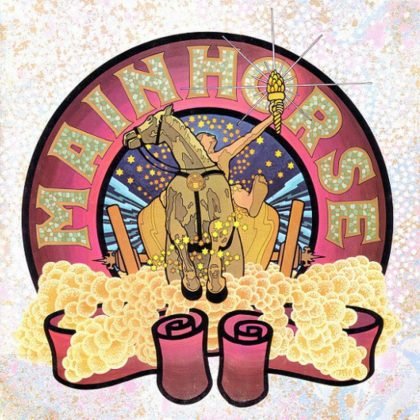 Another case of a versatile band of the early 70’s, which, had a contract with a huge record company of the time, but was finally left with a self-titled album and the legacy of its members, mainly Swiss keyboardist Patrick Moraz. Mainhorse’s music was pure British progressive rock, which can be heard from the very first notes that run through their debut. Sounding like early Deep Purple, but also with a direct ELP or Nice influence, they are mainly remembered for the participation of Moraz. Although the album is characterized by the aura of the Swiss maestro, as well as the heavy guitar parts, it also has obvious compositional weaknesses. However, despite the fact that it’s not a groundbreaking contribution to the genre, the arrangements and dynamics presented in Mainhorse are elements that bear Moraz’s signature. Pale Sky and God are the best compositions that show what they could do in their next endeavors.
Another case of a versatile band of the early 70’s, which, had a contract with a huge record company of the time, but was finally left with a self-titled album and the legacy of its members, mainly Swiss keyboardist Patrick Moraz. Mainhorse’s music was pure British progressive rock, which can be heard from the very first notes that run through their debut. Sounding like early Deep Purple, but also with a direct ELP or Nice influence, they are mainly remembered for the participation of Moraz. Although the album is characterized by the aura of the Swiss maestro, as well as the heavy guitar parts, it also has obvious compositional weaknesses. However, despite the fact that it’s not a groundbreaking contribution to the genre, the arrangements and dynamics presented in Mainhorse are elements that bear Moraz’s signature. Pale Sky and God are the best compositions that show what they could do in their next endeavors.
After the debut of Mainhorse, Moraz played with Refugee, but left his mark on prog rock through his participation in the inconceivable Relayer by Yes, when he was invited to replace Rick Wakeman.
The Facedancers – The Facedancers
[Paramount, 1972]
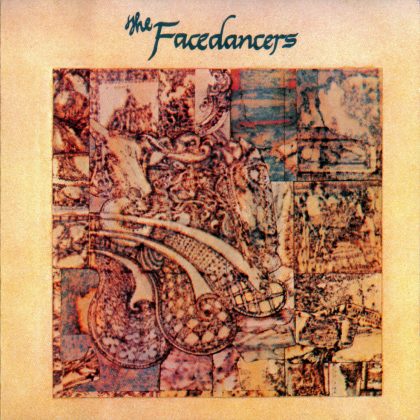 Little is known about this mysterious band. The quintet from Philadelphia was formed in 1971 as an evolution of the comic group Lobotomy, they signed with Paramount and in 1972 released their self-titled album, produced by the great Teo Macero, producer of Kind of Blue, Sketches of Spain and Bitches Brew by Miles Davis and Time Out by Dave Brubeck Quartet.
Little is known about this mysterious band. The quintet from Philadelphia was formed in 1971 as an evolution of the comic group Lobotomy, they signed with Paramount and in 1972 released their self-titled album, produced by the great Teo Macero, producer of Kind of Blue, Sketches of Spain and Bitches Brew by Miles Davis and Time Out by Dave Brubeck Quartet.
The Facedancers’ music is so versatile that it is impossible to be classified, and the only thing that’s certain is that they had nothing to do with anything else coming from the US. The peculiar mix of psychedelic rock with pure but extremely strange progressive rock acquires a very special identity combined with the intense folk, blues and experimental elements. Imagine a cocktail including Yes’ symphonic sound, Tim Buckley’s melancholy, the romance of US psych, the darkness of Scandinavian prog and the directness of blues / hard rock in the form of songs which transform from lyrical compositions into endless jams, instrumental parts with odd time signatures and triple harmonic vocals with unbelievably high notes. The absolutely mysterious Facedancers remained that way forever, as all five musicians never recorded anything else, before or after this album.
Από τους: Πάρη Γραβουνιώτη, Δημήτρη Καλτσά, Κώστα Μπάρμπα, Πέτρο Παπαδογιάννη, Πάνο Παπάζογλου, Θάνο Πάτσο, Τάσο Ποιμενίδη, Κώστα Ρόκα, Θωμά Σαρακίντση, Παναγιώτη Σταθόπουλο, Goran Petrić
Η αλήθεια είναι ότι όλοι μας στο Progrocks.gr δεν βλέπαμε την ώρα για το τέταρτο μέρος αυτής της σειράς άρθρων. Σας ευχαριστούμε πολύ για τα σχόλια και την στήριξή σας! Είναι παραπάνω από ενθαρρυντικό να γνωρίζουμε ότι πολλοί αναγνώστες το περίμεναν όσο κι εμείς.
Όπως έγινε στο πρώτο, το δεύτερο και το τρίτο μέρος, τα “one-album wonders” παρουσιάζονται χωρίς χρονολογική σειρά, αλλά τυχαία και όπως τα τρία πρώτα μέρη, αυτό το άρθρο είναι ένα αδιάκοπο ταξίδι μπρος και πίσω στο χρόνο, που ελπίζουμε να είναι συναρπαστικό στην ανάγνωση όσο ήταν κάθε κομμάτι στη συγγραφή του.

Festa Mobile – Diario di viaggio della Festa Mobile
[RCA Italiana, 1972]

Οι Festa Mobile σχηματίστηκαν στη Ρώμη από τους αδερφούς Giovanni (πλήκτρα) και Francesco Boccuzzi (μπάσο, πλήκτρα) όταν τις δυνάμεις τους με τον συντοπίτη τους (από την Apulia) Alessio Alba (κιθάρα) και τους Renato Baldassarri (φωνητικά) και Maurizio Cobianchi (ντραμς). Το 1973 κυκλοφόρησε το Diario di viaggio della Festa Mobile. Πρόκειται για ένα concept album όπου εξιστορούνται οι περιπέτειες μιας παρέας κωμικών καθώς επιστρέφουν από εορτασμούς προς τιμή του καταπιεστικού βασιλιά της φανταστικής περιοχής Hon. Οι συναρπαστικές αλλαγές σκηνικού αναπαρίστανται ιδανικά μέσα από τους στίχους και το λυρικό συμφωνικό progressive rock των Festa Mobile με ψήγματα jazz, όπου κυριαρχεί η ενέργεια και η υψηλή τεχνική. Ο συνδυασμός των εκπληκτικών κλασικότροπων θεμάτων στα πλήκτρα με το ιδιότυπο, σχεδόν Fripp-οειδές, σκληρό κιθαριστικό παίξιμο εντυπωσιάζει σε τέτοιο βαθμό, ώστε τα 32 λεπτά του δίσκου να φαντάζουν υπεραρκετά.
Μετά τη διάλυση των Festa Mobile, οι αδερφοί Boccuzzi σχημάτισαν στην πατρίδα τους, το Bari, τους jazz-rock / fusion proggers Il Baricentro με τους οποίους κυκλοφόρησαν τα εξαιρετικά Sconcerto (1976) και Trusciant (1978). Κατόπιν, ο Francesco μετακόμισε στις Η.Π.Α., ο Giovanni δραστηριοποιείται μέχρι σήμερα ως συνθέτης, καθηγητής και συγγραφέας, ενώ ο Alessio Alba εξειδικεύτηκε στην Ινδική μουσική και εξελίχθηκε σε ειδήμονα ethnic οργάνων, όπως το sarod.
Náttúra – Magic Key
[Nattura Records, 1972]

Το πρωτοποριακό Ισλανδικό σχήμα των Náttúra σχηματίστηκε το 1969 και γρήγορα απέκτησε μεγάλη φήμη στο νησί παίζοντας σε τοπικά clubs. Το 1971 η σύνθεση της μπάντας άλλαξε σημαντικά κυρίως με την είσοδο της Αμερικανίδας τραγουδίστριας Shady Owens. Τον Οκτώβριο του 1972 ταξίδεψαν στην Αγγλία και ηχογράφησαν το Magic Key στα Orange Studios, το οποίο κυκλοφόρησαν μόνοι τους στις 12 Δεκεμβρίου της ίδιας χρονιάς.
Στον μοναδικό δίσκο των Náttúra εντοπίζεται μία πολύ ιδιαίτερη μίξη ζεστού ψυχεδελικού rock με πολύπλοκα prog σημεία και pop φιλοσοφία με πειστικότατo παίξιμο, τόσο στα smooth όσο και στα hard / heavy σημεία. Τα κομμάτια, που πείθουν πως πρόκειται για βρετανικό συγκρότημα με έντονες Curved Air (και όχι μόνο) επιρροές, διαφέρουν αρκετά μεταξύ τους, αποδεικνύοντας τον πολυπρόσωπο μουσικό χαρακτήρα της μπάντας, θυσιάζοντας όμως ταυτόχρονα τη ροή του album, που είναι περιέργως εντυπωσιακό και εντυπωσιακά ασυνεχές ταυτόχρονα.
Οι Náttúra διαλύθηκαν 1973. Στη συνέχεια, ο Björgvin Gíslason (κιθάρα, φλάουτο) αρχικά έπαιξε στους Svanfríður και κατόπιν έσμιξε ξανά με τον Pétur Kristjánsson, πρώην τραγουδιστή των Náttúra, στους Pelican και μετά στους Paradís. Ο Karl J. Sighvatsson (πλήκτρα) (πρώην Trúbrot) έγινε η ηγετική μορφή των θρυλικών Hinn íslenski þursaflokkur, ο μπασίστας Sigurður Árnason έπαιξε στο εξαιρετικό folk rock album των Jónas og Einar (Gypsy Queen – 1972), ενώ η Shady Owens (πρώην Trúbrot) ακολούθησε solo καριέρα.
Bangor Flying Circus – Bangor Flying Circus
[ABC/Dunhill Records, 1969]
 Μετά το τέλος των H.P. Lovecraft, ο drummer Mike Tegza έχοντας στο πλευρό του τους David Wolinski σε πλήκτρα, μπάσο, φωνητικά και Alan DeCarlo σε κιθάρα και φωνητικά, σχημάτισε τους Bangor Flying Circus και το 1969 κυκλοφόρησαν τον μοναδικό τους, ομώνυμο δίσκο. Ο ήχος των εκ Chicago ορμώμενων Αμερικανών είναι δύσκολο να χαρακτηριστεί εξολοκλήρου progressive, καθώς αφενός στα late 60s στις Η.Π.Α. δεν υπήρχε prog σκηνή και αφετέρου οι επιρροές προέρχονταν κυρίως από ψυχεδελικά, blues και jazz ακούσματα. Εν ολίγοις, κάπου εκεί ενδιάμεσα ισορροπεί το Bangor Flying Circus: ένα psych / prog κράμα με πολλές jazz πινελιές. Οι υπέροχες μελωδίες του Violent Man φέρνουν στο νου τους H.P. Lovecraft και τους Vanilla Fudge, ενώ σε παρόμοιο ύφος κινούνται και κομμάτια όπως τα Concerto Four Clouds και Someday I’ll Find. Τα πιο ψυχεδελικά Come On People και Mama Don’t You Know συνυπάρχουν με τα πιο jazzy Ode To Sadness και A Change in Our Lives, δείγμα της υφολογικής ποικιλομορφίας του δίσκου, ενώ το φινάλε με το εξαιρετικό In The Woods και την καταπληκτική 6λεπτη διασκευή στο Norwegian Wood των Beatles δεν θα μπορούσε να είναι ιδανικότερο. Από τη δισκογραφική συνέχεια των τριών μελών, αξίζει να δώσετε βάση στο ντεμπούτο των Madura.
Μετά το τέλος των H.P. Lovecraft, ο drummer Mike Tegza έχοντας στο πλευρό του τους David Wolinski σε πλήκτρα, μπάσο, φωνητικά και Alan DeCarlo σε κιθάρα και φωνητικά, σχημάτισε τους Bangor Flying Circus και το 1969 κυκλοφόρησαν τον μοναδικό τους, ομώνυμο δίσκο. Ο ήχος των εκ Chicago ορμώμενων Αμερικανών είναι δύσκολο να χαρακτηριστεί εξολοκλήρου progressive, καθώς αφενός στα late 60s στις Η.Π.Α. δεν υπήρχε prog σκηνή και αφετέρου οι επιρροές προέρχονταν κυρίως από ψυχεδελικά, blues και jazz ακούσματα. Εν ολίγοις, κάπου εκεί ενδιάμεσα ισορροπεί το Bangor Flying Circus: ένα psych / prog κράμα με πολλές jazz πινελιές. Οι υπέροχες μελωδίες του Violent Man φέρνουν στο νου τους H.P. Lovecraft και τους Vanilla Fudge, ενώ σε παρόμοιο ύφος κινούνται και κομμάτια όπως τα Concerto Four Clouds και Someday I’ll Find. Τα πιο ψυχεδελικά Come On People και Mama Don’t You Know συνυπάρχουν με τα πιο jazzy Ode To Sadness και A Change in Our Lives, δείγμα της υφολογικής ποικιλομορφίας του δίσκου, ενώ το φινάλε με το εξαιρετικό In The Woods και την καταπληκτική 6λεπτη διασκευή στο Norwegian Wood των Beatles δεν θα μπορούσε να είναι ιδανικότερο. Από τη δισκογραφική συνέχεια των τριών μελών, αξίζει να δώσετε βάση στο ντεμπούτο των Madura.
Apoteosi – Apoteosi
[Said Record, 1975]
 Οι Apoteosi, μία μπάντα από την Καλαβρία με ελληνικό όνομα και έντονο ελληνικό στοιχείο σχηματίστηκε το 1974 από τα τρία αδέρφια Idà, τον 14χρονο τότε (!) Massimo (πλήκτρα, πιάνο), την Silvana ( φωνή) και τον Frederico (μπάσο, πέθανε το 1992) και τους Franco Vinci (κιθάρα, φωνή) και Marcello Surace (τύμπανα), ενώ την παραγωγή είχε αναλάβει ο πατέρας των τριών αδερφών, Salvatore Idà. Οι Apoteosi περπατούν στα ηχητικά χνάρια των γιγάντων του είδους PFM, ELP και Genesis χωρίς μεγάλη ηχητική παρέκκλιση, εντούτοις μιλάμε για ένα album που η ποιότητα των συνθέσεων σε συνδυασμό με την νεαρή ηλικία των μελών πραγματικά εντυπωσιάζει. Ο Massimo ήταν ένα παιδί θαύμα με καταπληκτικό ήχο και παίξιμο σε Hammond και synths, ενώ η κιθάρα του Franco Vinci συνειρμικά και παικτικά φέρνει στο μυαλό τον μεγάλο συνονόματό του Franco Mussida (PFM). Η φωνή της Silvana είναι ιδιαίτερη και δένει ιδανικά στα πιο ήρεμα, ονειρικά σημεία με φλάουτο και ακουστικές κιθάρες. Οι εναλλαγές στα συναισθήματα και τα μεγάλα instrumental περάσματα δίνουν ποικιλία στο album, που ηχητικά είναι εντελώς αντιπροσωπευτικό του Rock Progressivo Italiano και το οποίο κάθε φίλος του είδους οφείλει να ακούσει. Τα μέλη τους συνέχισαν να είναι ενεργά δισκογραφικά και μουσικά.
Οι Apoteosi, μία μπάντα από την Καλαβρία με ελληνικό όνομα και έντονο ελληνικό στοιχείο σχηματίστηκε το 1974 από τα τρία αδέρφια Idà, τον 14χρονο τότε (!) Massimo (πλήκτρα, πιάνο), την Silvana ( φωνή) και τον Frederico (μπάσο, πέθανε το 1992) και τους Franco Vinci (κιθάρα, φωνή) και Marcello Surace (τύμπανα), ενώ την παραγωγή είχε αναλάβει ο πατέρας των τριών αδερφών, Salvatore Idà. Οι Apoteosi περπατούν στα ηχητικά χνάρια των γιγάντων του είδους PFM, ELP και Genesis χωρίς μεγάλη ηχητική παρέκκλιση, εντούτοις μιλάμε για ένα album που η ποιότητα των συνθέσεων σε συνδυασμό με την νεαρή ηλικία των μελών πραγματικά εντυπωσιάζει. Ο Massimo ήταν ένα παιδί θαύμα με καταπληκτικό ήχο και παίξιμο σε Hammond και synths, ενώ η κιθάρα του Franco Vinci συνειρμικά και παικτικά φέρνει στο μυαλό τον μεγάλο συνονόματό του Franco Mussida (PFM). Η φωνή της Silvana είναι ιδιαίτερη και δένει ιδανικά στα πιο ήρεμα, ονειρικά σημεία με φλάουτο και ακουστικές κιθάρες. Οι εναλλαγές στα συναισθήματα και τα μεγάλα instrumental περάσματα δίνουν ποικιλία στο album, που ηχητικά είναι εντελώς αντιπροσωπευτικό του Rock Progressivo Italiano και το οποίο κάθε φίλος του είδους οφείλει να ακούσει. Τα μέλη τους συνέχισαν να είναι ενεργά δισκογραφικά και μουσικά.
Svanfriður – What’s Hidden There?
[Self-released, 1972]

Η άνθηση της rock σκηνής στη Βρετανία επηρέασε σε μεγάλο βαθμό τις βόρειες χώρες, ακόμα και τη μακρινή απομονωμένη Ισλανδία. Οι Svanfriður κυκλοφόρησαν το μοναδικό τους άλμπουμ το 1972, το οποίο ηχογράφησαν στο Λονδίνο. Τα εννέα τραγούδια του album θα μπορούσαν να ανήκουν σε κάποια από τις μπάντες της Βρετανίας εκείνης της εποχής. Πώς μπορεί να είναι κακό ένα άλμπουμ που ξεκινά με ένα τόσο όμορφο κιθαριστικό θέμα όπως αυτό στο Woman of Our Day και με μία τόσο κολλητική φωνητική μελωδία στο ρεφρέν του; Αξίζουν ιδιαιτέρως να αναφερθούν το The Mug που ενσαρκώνει ηχητικά την τεχνοτροπία της σύνθεσης των Jethro Tull και το ήπιο ομώνυμο τραγούδι με την χρήση του βιολιού να φλερτάρει με το folk. Από εκεί και πέρα υπάρχουν παθιασμένες συνθέσεις, βαθιά επηρεασμένες από τους Cream και τους Fleetwood Mac της εποχής του Peter Green μεταξύ άλλων. Το τέλος έρχεται με το Finido, ένα instrumental όργιο με ένα όμορφο επιθετικό θέμα στο βιολί.
To album πούλησε λίγες εκατοντάδες αντίτυπα και μοιραία η μπάντα διαλύθηκε στα μέσα του 1973. Στη συνέχεια, ο Pétur Kristjánsson (ο αρχικός τραγουδιστής των Náttúra) ήταν ιδρυτικό μέλος των Pelican, ξαναβρέθηκε με τον μπασίστα των Svanfriður, Gunnar Hermannsson, στους Paradís και δυστυχώς πέθανε από καρδιακή προσβολή στις 3/9/2004.
Jackal – Awake
[Periwinkle Records, 1973]

Οι Jackal δημιουργήθηκαν στο Τορόντο από τα αδέρφια Kellesis (πιθανολογώ ελληνικής καταγωγής) το 1969. Έπειτα από μία σειρά live εμφανίσεων που τους εξασφάλισαν δισκογραφικό συμβόλαιο, κυκλοφόρησαν το 1973 το πρώτο και μοναδικό τους album, Awake, που περιλαμβάνει 8 τραγούδια συνολικής διάρκειας 40 λεπτών.
Τα δύο πρώτα υπέροχα τραγούδια μπολιάζουν το acid rock με έντονες επιρροές από το βρετανικό heavy rock, με τα πλήκτρα του βασικού συνθέτη Chris Kellesis να πρωταγωνιστούν, όπως και σε όλο το album. Το εναρκτήριο At the Station είχε τις προϋποθέσεις να τους κάνει αναγνωρίσιμους, κάτι το οποίο όμως δεν επιτεύχθηκε ποτέ. Έπειτα τα πράγματα αλλάζουν και η πλάστιγγα γέρνει οριακά προς το βρετανικό blues και prog rock και το γκρουπ ξεδιπλώνει τις αρετές του, με τα πρωταγωνιστικά πλήκτρα και τις διακριτικές κιθαριστικές πινελιές να ανεβάζουν το επίπεδο των συνθέσεων. Στο υπέροχο How Time Has Flown τα θέματα των πλήκτρων φέρνουν στο μυαλό τους Deep Purple και Uriah Heep, με έντονη δοσολογία βρετανικού prog. Η progressive διάθεση του γκρουπ συνδυάζει επιτυχώς το σπουδαίο βρετανικά rock της εποχής φιλτραρισμένα όμως από τις επιρροές της ψυχεδέλειας και συγκροτημάτων όπως οι Electric Prunes, 13th Floor Elevators και οι Doors.
Δυστυχώς, η έλλειψη εμπορικού ενδιαφέροντος, σταδιακά, έφερε το γκρουπ στη διάλυση και τα μέλη τους εγκατέλειψαν τη μουσική.
Fusion Orchestra – Skeleton in Armour
[EMI, 1973]

Με μια σύντομη καριέρα (1969-1974) οι Λονδρέζοι Fusion Orchestra έπαιξαν πάνω από 500 συναυλίες, επιδεικνύοντας τα εχέγγυα τους στο εκλεκτικό και δυναμικό Skeleton in Armour του 1973. Η κλασσική σύνθεση του γκρουπ ολοκληρώθηκε το 1972 με την έλευση του μπασίστα Dave Cowell ο οποίος βοήθησε στην εκλέπτυνση του ήχου σε rock και jazz φόρμες. Αυτό οδήγησε στη μοναδική κυκλοφορία τους (μέσω της ΕΜΙ!) και συντέλεσε στη φήμη τους ως ενεργητικό και ενθουσιώδες γκρουπ στις live εμφανίσεις. Κορυφαία ίσως στιγμή τους η συμμετοχή τους μπροστά σε 50,000+ κοινό στο Scheessel Rock Festival στη βόρεια Γερμανία το 1973.
Ο ήχος τους συχνά συσχετίζεται με αυτόν των Babe Ruth (χωρίς την ισπανική κιθάρα), ενώ το album βρίθει χαρακτήρα και προσωπικότητα με τα δυναμικά γυναικεία του φωνητικά, την κιθαριστική και hard rock διάθεση, με έντονο χρώμα jazz / psych progressive rock υψηλού επιπέδου. Το Skeleton in Armour θεωρείται σπάνιο εύρημα στην καλύτερη περίοδο του προοδευτικού rock.
Μετά τη διάλυση τους, η τραγουδίστρια / φλαουτίστρια Jill Saward συνέχισε σε προσωπική καριέρα αλλά και στο γκρουπ Shakatak, ενώ ο κιθαρίστας Colin Dawson σχημάτισε το μακρινό 2009 (με τη σύντομη συμμετοχή του Dave Cowell) τους Fusion Orchestra 2. To σχήμα που θυμίζει έντονα τον αρχικό ήχο του γκρουπ, κυκλοφόρησε το 2013 το Casting Shadows, μία από τις καλύτερες progressive rock κυκλοφορίες εκείνης της χρονιάς.
Capitolo 6 – Frutti Per Kagua
[it, 1972]

Μια προσχώρηση δύο μουσικών το 1969 από το συγκρότημα των Gli Eremiti από το Viareggio στους I Rangers από το Livorno είχε σαν αποτέλεσμα την δημιουργία του κουιντέτου των Capitolo 6. Το συγκρότημα υπογράφει συμβόλαιο με την Ιταλική RCA και ξεκινά δράση αφού εγκαταστάθηκε στην Ρώμη το 1970.
Το 1971 έρχεται το πρώτο επτάιντσο και το συγκρότημα συμμετέχει σε διάσημα Ιταλικά festival, ενώ παίζουν support στους Led Zeppelin σε μια εμφάνιση τους στην Ιταλία. Δυστυχώς η σύνθεση της μπάντας δεν είναι σταθερή, ενώ σε τηλεοπτικές εμφανίσεις εμφανίζονται ως κουαρτέτο. Μέσα σε όλα αυτά το 1972 κυκλοφορεί το Frutti Per Kagua. Η πρώτη πλευρά περιλαμβάνει το μεγάλης διαρκείας ομώνυμο τραγούδι, μια μίξη βαριάς κιθάρας, με έντονη παρουσία του φλάουτου και ιταλικά φωνητικά. Στην δεύτερη πλευρά υπάρχουν τρία εξίσου χαρακτηριστικά τραγούδια, αλλά δεν φτάνουν στο επίπεδο του ομώνυμου τραγουδιού.
Στη συνέχεια κυκλοφόρησαν ακόμα δυο singles, αλλά η μπάντα πριν τελειώσει η χρονιά διαλύεται, αφού δεν έτυχαν ιδιαίτερης επιτυχίας. Έκτοτε τα μέλη τους αγνοούνται εκτός από τον κημπορντίστα Antonio Favila που ήταν μέλος των Campo Di Marte, αλλά πέθανε στις αρχές των 90s, ενώ το 1977 πέθανε από λευχαιμία ο αρχικός κημπορντίστας της μπάντας, Jimmy Santerini. Άλλη μια περίπτωση μιας ταλαιπωρημένης μπάντας που μας άφησε μία πολύ αξιόλογη κυκλοφορία από την χρυσή εποχή του Rock Progressivo Italiano.
Rainbow Band – Rainbow Band
[Sonet, 1970]

Όταν σχηματίστηκαν οι Rainbow Band στις αρχές του 1970 στην Κοπεγχάγη, αρκετά μέλη τους ήταν ήδη καταξιωμένοι μουσικοί. Ο Peer Frost (κιθάρα) ήταν στους θρυλικούς Young Flowers, ο Bent Hesselmann (πνευστά) και ο Lars Bisgaard (φωνητικά) ήταν στους Maxwells, ενώ ο Niels Brønsted (πιάνο) είχε παίξει με τον σπουδαίο τζαζίστα Albert Ayler. Το ομώνυμο album τους ηχογραφήθηκε τον Ιούλιο-Αύγουστο και κυκλοφόρησε τον Δεκέμβριο του 1970 από την Sonet, αλλά η αντικατάσταση του Bisgaard από τον Allan Mortensen οδήγησε στην επανηχογράφηση του δίσκου, με μικρές αλλάγές στα κομμάτια και την (αδικαιολόγητη) αντικατάσταση του Rainbow Song από το Sippin’ Wine. Μπορεί ο Mortensen να ήταν σαφώς καλύτερος τραγουδιστής από τον Bisgaard, ωστόσο η ζεστασιά του ήχου και ο underground χαρακτήρας της πρωτότυπης ηχογράφησης δεν υπάρχει στην κυκλοφορία του 1971.
Η υψηλή τεχνική κατάρτιση και τα αρκετά εξαιρετικά ορχηστρικά είναι εντυπωσιάζουν για μία κυκλοφορία 50 ετών πια. Η πολυσυλλεκτική μίξη πρώιμου progressive rock, ψυχεδέλειας, blues rock και jazz-rock που χαρακτήριζε εκείνη τη μεταβατική περίοδο έχει ιστορική σημασία και καλύπτει ένα τεράστιο εύρος μουσικών ρευμάτων, στερώντας, όμως, την ομοιογένεια από το σύνολο.
Το 1971, επειδή τα δικαιώματα του αρχικού τους ονόματος ανήκαν σε ένα Καναδικό psych / folk σχήμα, οι Rainbow Band αναγκάστηκαν να αλλάξουν το όνομά τους σε Midnight Sun.
Czar – Czar
[Fontana, 1970]
 Οι Czar προήλθαν από τη μετονομασία των Tuesday’s Children, μιας μπάντας που κυκλοφόρησε μια σειρά από pop σινγκλάκια στα τέλη των 60s. Στον ομώνυμο και μοναδικό τους δίσκο αλλάζουν άρδην το μουσικό τους ύφος, ανεβαίνοντας στο όχημα της έκρηξης του Βρετανικού progressive rock. Το Czar αποτελεί χαρακτηριστικότατο παράδειγμα της μετάβασης από την ψυχεδέλεια στο progressive, ενώ ηχεί και αρκετά σκληρό για κυκλοφορία του 1970, εγκολπώνοντας στην ουσία μεγάλο μέρος των νέων τάσεων της εποχής. Οι συνθέσεις βασίζονται στη δημιουργία ενός ηχητικού τείχους από πλήκτρα και κιθάρες, ενώ η περιπετειώδης δομή και η ένταση στο παίξιμο δεν αποκλείουν την psych pop μελωδικότητα, κυρίως στα φωνητικά. Η διάρκεια των κομματιών ποικίλει από τα τρία ως τα οχτώ λεπτά, με το Tread Softly on My Dreams να ανοίγει εντυπωσιακά των δίσκο, ενώ και τα εκτενή Cecelia και A Day in September επίσης ξεχωρίζουν. Δυστυχώς, αυτή ήταν και η μοναδική full-length δουλειά των Czar. Στην επανακυκλοφορία του υπάρχει τo single Oh Lord I’m Getting Heavy που κυκλοφόρησε την ίδια χρονιά, ένα κομμάτι που δεν μπήκε στο δίσκο και ένα demo πέντε κομματιών που επίσης δεν υπάρχουν στο δίσκο. Μετά τη διάλυσή τους τα τέσσερα μέλη είχαν ελάχιστες συμμετοχές σε άλλες μπάντες, με πιο αξιοπρόσεκτη αυτή του Paul Kendrick στους Tucky Buzzard.
Οι Czar προήλθαν από τη μετονομασία των Tuesday’s Children, μιας μπάντας που κυκλοφόρησε μια σειρά από pop σινγκλάκια στα τέλη των 60s. Στον ομώνυμο και μοναδικό τους δίσκο αλλάζουν άρδην το μουσικό τους ύφος, ανεβαίνοντας στο όχημα της έκρηξης του Βρετανικού progressive rock. Το Czar αποτελεί χαρακτηριστικότατο παράδειγμα της μετάβασης από την ψυχεδέλεια στο progressive, ενώ ηχεί και αρκετά σκληρό για κυκλοφορία του 1970, εγκολπώνοντας στην ουσία μεγάλο μέρος των νέων τάσεων της εποχής. Οι συνθέσεις βασίζονται στη δημιουργία ενός ηχητικού τείχους από πλήκτρα και κιθάρες, ενώ η περιπετειώδης δομή και η ένταση στο παίξιμο δεν αποκλείουν την psych pop μελωδικότητα, κυρίως στα φωνητικά. Η διάρκεια των κομματιών ποικίλει από τα τρία ως τα οχτώ λεπτά, με το Tread Softly on My Dreams να ανοίγει εντυπωσιακά των δίσκο, ενώ και τα εκτενή Cecelia και A Day in September επίσης ξεχωρίζουν. Δυστυχώς, αυτή ήταν και η μοναδική full-length δουλειά των Czar. Στην επανακυκλοφορία του υπάρχει τo single Oh Lord I’m Getting Heavy που κυκλοφόρησε την ίδια χρονιά, ένα κομμάτι που δεν μπήκε στο δίσκο και ένα demo πέντε κομματιών που επίσης δεν υπάρχουν στο δίσκο. Μετά τη διάλυσή τους τα τέσσερα μέλη είχαν ελάχιστες συμμετοχές σε άλλες μπάντες, με πιο αξιοπρόσεκτη αυτή του Paul Kendrick στους Tucky Buzzard.
Frob – Frob
[Musikladen, 1976]

Οι Frob είναι ακόμα μια περίπτωση αναβίωσης που ανέλαβε η Garden Of Delights με τις κλασικές της πλέον επανακυκλοφορίες δυσεύρετων και ξεχασμένων albums στη λήθη της μεγάλης των 70’s σχολής. Με ένα δίσκο και αυτοί, ένα από τα πολλά συγκροτήματα που αποτέλεσαν μέρος της γερμανικής παραγωγής ψυχεδελοτζαζοπροοδευτικής μουσικής, είναι μια περίπτωση άξια αναφοράς.
Το σχήμα από την Βεστφαλία ήταν πιο κοντά ηχητικά στους Out of Focus, παρά σε krautrock πεδία. Δεδομένου πως πρόκειται για γερμανική μπάντα, το παράδοξο είναι ότι κινητήριος μοχλός ήταν ο Γάλλος κιθαρίστας Philippe Caillat, ο οποίος μπήκε στους Frob το 1975 αφού παρακολούθησε μία συναυλία τους. Φυσικά, τα πλήκτρα και το πιάνο καθοδηγούν με μια αυτοσχεδιαστική λογική τις συνθέσεις και τις αναδεικνύουν. Και αφού προσπεράσει κανείς το περιέργως αδιάφορο εξώφυλλο (συγκριτικά πάντα και με αντίστοιχες άλλες περιπτώσεις), η jazz-rock / fusion λογική που διαπνέει το άλμπουμ γίνεται αντιληπτή εξαρχής με το Wassertropfen που μπαίνει με ανεβαστική διάθεση, ενώ το Locomotive είναι επίσης μια προσπάθεια που χρωματίζεται από το ταλέντο των Frob.
Μετά την κυκλοφορία του μοναδικού τους άλμπουμ το 1976, σταμάτησαν και τα μέλη τους ακολούθησαν άλλους δρόμους, χωρίς όμως να επανέλθουν δισκογραφικά με τους Frob.
Rialzu – Rialzu
[Ricordu, 1978]
 Η Κορσική δεν συγκαταλέγεται στα πιο συνήθη μουσικά κέντρα του γαλλικού progressive rock, ωστόσο μία εντελώς underground μπάντα έκανε την εμφάνισή της στα late 70s με τα έξι μέλη να κατάγονται από την πατρίδα του Ναπολέοντα Βοναπάρτη. Ο λόγος για τους Rialzu, των οποίων ο ομώνυμος δίσκος κυκλοφόρησε το 1978 και κόπηκε μόνο σε 1000 κόπιες από την άσημη Ricordu, και ουσιαστικά έγινε πιο γνωστός στους prog κύκλους 30 χρόνια αργότερα με την επανέκδοση της Soleil Zeuhl. Το σεξτέτο διέθετε στο μουσικό του οπλοστάσιο κιθάρα, πλήκτρα, βιολί, μπάσο, ντραμς και τρία μέλη για δεύτερα φωνητικά, ενώ το όνομα της μπάντας, οι τίτλοι των κομματιών και οι στίχοι είναι στην κορσικανική διάλεκτο. Όντας βαθιά επηρεασμένοι κυρίως από τους σπουδαίους Magma, αλλά και από τον fusion και symphonic prog ήχο, μας παρέδωσαν έναν εξαιρετικό δίσκο που ηχεί πλούσιος και πυκνός, γεμάτος από όμορφες μελωδίες και στοιχειωμένες ατμόσφαιρες. Το U Rigiru, που καταλαμβάνει με τα 16 του λεπτά όλη την πρώτη πλευρά, αποτελεί ένα από τα highlights του zeuhl ήχου, ενώ και η δεύτερη πλευρά με το 11λεπτο I Lagramanti και το φινάλε του A Mubba είναι εξίσου εντυπωσιακή, εστιάζοντας πιο πολύ στην σκοτεινή πλευρά τους. Μετά τη διάλυση των Rialzu, ο Jean-Philippe Gallet έπαιξε σαξόφωνο και τραγούδησε στο zeuhl ντεμπούτο των Musique Noise (Fulmines Regularis – 1988).
Η Κορσική δεν συγκαταλέγεται στα πιο συνήθη μουσικά κέντρα του γαλλικού progressive rock, ωστόσο μία εντελώς underground μπάντα έκανε την εμφάνισή της στα late 70s με τα έξι μέλη να κατάγονται από την πατρίδα του Ναπολέοντα Βοναπάρτη. Ο λόγος για τους Rialzu, των οποίων ο ομώνυμος δίσκος κυκλοφόρησε το 1978 και κόπηκε μόνο σε 1000 κόπιες από την άσημη Ricordu, και ουσιαστικά έγινε πιο γνωστός στους prog κύκλους 30 χρόνια αργότερα με την επανέκδοση της Soleil Zeuhl. Το σεξτέτο διέθετε στο μουσικό του οπλοστάσιο κιθάρα, πλήκτρα, βιολί, μπάσο, ντραμς και τρία μέλη για δεύτερα φωνητικά, ενώ το όνομα της μπάντας, οι τίτλοι των κομματιών και οι στίχοι είναι στην κορσικανική διάλεκτο. Όντας βαθιά επηρεασμένοι κυρίως από τους σπουδαίους Magma, αλλά και από τον fusion και symphonic prog ήχο, μας παρέδωσαν έναν εξαιρετικό δίσκο που ηχεί πλούσιος και πυκνός, γεμάτος από όμορφες μελωδίες και στοιχειωμένες ατμόσφαιρες. Το U Rigiru, που καταλαμβάνει με τα 16 του λεπτά όλη την πρώτη πλευρά, αποτελεί ένα από τα highlights του zeuhl ήχου, ενώ και η δεύτερη πλευρά με το 11λεπτο I Lagramanti και το φινάλε του A Mubba είναι εξίσου εντυπωσιακή, εστιάζοντας πιο πολύ στην σκοτεινή πλευρά τους. Μετά τη διάλυση των Rialzu, ο Jean-Philippe Gallet έπαιξε σαξόφωνο και τραγούδησε στο zeuhl ντεμπούτο των Musique Noise (Fulmines Regularis – 1988).
Rustichelli e Bordini – Opera Prima
[RCA, 1973]

Διανύουμε το 1973, το προοδευτικό rock κορυφώνει τις εκφραστικές του αρετές σε διάφορες γωνιές ανά την Ευρώπη και η Ιταλία παραδίδει ένα ακόμη ιδιόμορφο έργο, με έντονη την εντοπιότητα της χώρας, το οποίο συντονίζεται με τις διεθνείς εξελίξεις.
Με τα ηχοχρώματα ποικίλων πληκτροφόρων οργάνων και κρουστών να γίνονται πλαστελίνη στα χέρια και τις εμπνεύσεις τους, οι Paolo Rustichelli και Carlo Bordini αφήνοντας πίσω τις μέρες του βραχύβιου γκρουπ Cammello Black, σκάρωσαν ένα πλούσιο μουσικό ψηφιδωτό. Και μπορεί να είναι εμφανείς οι καταβολές του ντουέτου που απαντώνται στο αντίστοιχο βρετανικό ρεύμα, με κύριο όνομα αναφοράς αυτό των Emerson Lake and Palmer, μα το συμφωνικό rock του ντουέτου έχει μια ιταλικότητα που το διασχίζει από άκρη σ’ άκρη. Μια μελωδικότητα κομψή, στρογγυλή, ρομαντική, ολίγον νευρική, εκλυόμενη από hammond, mellotron, synths και πιάνο, λειτουργεί αποφασιστικά στη γέφυρα μεταξύ κλασικής, pop και rock αντίληψης. Οι δε ρυθμοί γίνονται τις περισσότερες φορές εκστατικοί και τα φωνητικά παίζουν σε πομπώδεις, οπερετικές εκτάσεις rock φύσης χωρίς να πετυχαίνουν πάντα τον στόχο.
Μετά το Opera Prima, ο Rusticelli μπήκε στο συγκρότημα των Oliver, που λίγο μετά χωρίς αυτόν σχηματίστηκαν οι περίφημοι Goblin, μα στο ενδιάμεσο κυκλοφόρησαν δίσκο ως Cherry Five, στον οποίο συνέδραμε ο Bordini!
Twenty Sixty Six and Then – Reflections on the Future
[United Artists Records, 1972]
 Τι κοινό μπορεί να έχει η μάχη του Hastings με έναν από τους αρτιότερους και πιο πληθωρικούς heavy prog δίσκους όλων των εποχών; Οι κατά τα 5/6 Γερμανοί Twenty Sixty Six and Then σχηματίστηκαν στο Mannheim το 1971 έχοντας στο μικρόφωνο τον Βρετανό Geff Harrison και εμπνεύστηκαν το όνομά τους από την ιστορική μάχη του 1066 μεταξύ Άγγλων και Νορμανδών προσθέτοντας μία χιλιετία. Το εντυπωσιακό με την περίπτωσή τους ήταν ότι διέθεταν δύο πληκτράδες με πλούσιο ταλέντο καλύπτοντας όλα τα φάσματα του ήχου της εποχής (Mellotron, organ, electric piano, synths). Σε συνδυασμό με τη χαρακτηριστική βραχνή φωνάρα του Geff Harrison και τις εντυπωσιακές κιθαριστικές επιδόσεις του Gerhard Mrozeck, οι πέντε συνθέσεις του Reflections οn the Future μπαίνουν με άνεση στο πάνθεον της ακμάζουσας τότε γερμανικής σκηνής. Από το εξαιρετικά heavy εναρκτήριο At My Home στις εναλλαγές του αγαπημένου Autumn (εδώ υπάρχει κιθαριστικό riff που είναι προπομπός του progressive metal) και από το ψυχεδελικών προεκτάσεων prog των Butterfly και How Do You Feel στο 16λεπτο ομώνυμο έπος που περικλείει όλα τα παραπάνω, καταλήγουμε στο ότι έχουμε να κάνουμε με έναν δίσκο κομψοτέχνημα. Μετά τη διάλυσή τους ο μόνος που συνέχισε πιο ενεργά ήταν ο Geff Harrison συμμετέχοντας σε δύο δίσκους των Kin Ping Meh και ακολουθώντας solo καριέρα.
Τι κοινό μπορεί να έχει η μάχη του Hastings με έναν από τους αρτιότερους και πιο πληθωρικούς heavy prog δίσκους όλων των εποχών; Οι κατά τα 5/6 Γερμανοί Twenty Sixty Six and Then σχηματίστηκαν στο Mannheim το 1971 έχοντας στο μικρόφωνο τον Βρετανό Geff Harrison και εμπνεύστηκαν το όνομά τους από την ιστορική μάχη του 1066 μεταξύ Άγγλων και Νορμανδών προσθέτοντας μία χιλιετία. Το εντυπωσιακό με την περίπτωσή τους ήταν ότι διέθεταν δύο πληκτράδες με πλούσιο ταλέντο καλύπτοντας όλα τα φάσματα του ήχου της εποχής (Mellotron, organ, electric piano, synths). Σε συνδυασμό με τη χαρακτηριστική βραχνή φωνάρα του Geff Harrison και τις εντυπωσιακές κιθαριστικές επιδόσεις του Gerhard Mrozeck, οι πέντε συνθέσεις του Reflections οn the Future μπαίνουν με άνεση στο πάνθεον της ακμάζουσας τότε γερμανικής σκηνής. Από το εξαιρετικά heavy εναρκτήριο At My Home στις εναλλαγές του αγαπημένου Autumn (εδώ υπάρχει κιθαριστικό riff που είναι προπομπός του progressive metal) και από το ψυχεδελικών προεκτάσεων prog των Butterfly και How Do You Feel στο 16λεπτο ομώνυμο έπος που περικλείει όλα τα παραπάνω, καταλήγουμε στο ότι έχουμε να κάνουμε με έναν δίσκο κομψοτέχνημα. Μετά τη διάλυσή τους ο μόνος που συνέχισε πιο ενεργά ήταν ο Geff Harrison συμμετέχοντας σε δύο δίσκους των Kin Ping Meh και ακολουθώντας solo καριέρα.
Abraxis – Abraxis
[International Bestseller Company, 1977]

Το βραχύβιο σχήμα των Abraxis είναι ένα από τα πιο άγνωστα supergroups των 70s. Με εξαίρεση τον session κιθαρίστα Paul Elias, η προϋπηρεσία των υπολοίπων αποτελεί από μόνη της απόδειξη μιας μεγάλης ιστορικής αδικίας, που πιθανότατα οφείλεται στο ότι η Βελγική μπάντα ήταν ενεργή για λιγότερο από δύο χρόνια. Ο Charles Loos (πλήκτρα) και ο Jean-Paul Musette (μπάσο) που ηγούνταν του σχήματος και έγραψαν όλη τη μουσική, ήταν μαζί στους σπουδαίους Cos, ο φλαουτίστας Dirk Bogaert και ο ντράμερ Jack Mauer έπαιζαν στους prog θρύλους Waterloo και Pazop, ενώ ο Tony Malisan, ο οποίος παίζει ντραμς στα περισσότερα κομμάτια, ήταν βασικό μέλος των εξαιρετικών Esperanto.
Η μουσική των Abraxis ήταν κατά βάση περφεξιονιστικό jazz-rock / fusion με έντονα prog στοιχεία που παραπέμπουν κυρίως στον Canterbury ήχο και ακόμα πιο συγκεκριμένα στους Gilgamesh National health και Supersister, ενώ τα πιο αυτοσχεδιαστικά fusion σημεία θυμίζουν Chick Corea. Τα καλύτερα κομμάτια του album είναι τα Clear Hours, Valse de la mort / A boire / Et à / Manger και Sweetank, αλλά δεν υπάρχει καμία βαρετή στιγμή.
Μετά τη διάλυσή τους, ο Loos έπαιξε ξανά με τους Cos και κατόπιν στο μοναδικό album των Nuit câline à la villa mon rêve και τους Julverne, ενώ συνέχισε και την solo καριέρα του.
Diabolus – Diabolus (High Tones)
[Bellaphon, 1972]
 Οι Diabolus είναι μια από τις περιπτώσεις μπαντών με Αγγλικό πυρήνα που όμως έδρασαν σε Γερμανικό έδαφος. Δημιουργήθηκαν στα τέλη της δεκαετίας του 60 από τους Βρετανούς John Hadfield (κιθάρα, φωνή), Anthony Hadfield (μπάσο, φωνή), Philip Howard (πλήκτρα, πνευστά, φωνητικά) και τον Γερμανό Elwood Von Seibold (κρουστά). Το μόνο τους album κυκλοφόρησε το 1972 και αποτελεί ένα από τα καλύτερα κρυμμένα διαμάντια της δεκαετίας. Εκπληκτικό μείγμα βρετανικού progressive rock, heavy prog και jazz-rock της εποχής με ευρηματικό transition ανάμεσα στα είδη. Ο Howard δίνει την εντύπωση ότι το σχήμα είναι επταμελές, καθώς όπου χρειάζεται παίζει jazz σαξόφωνο, αλλού prog folk φλάουτο, αλλού πλήκτρα, με αποκορύφωμα τα σημεία που έχει κάνει οverdubs στα όργανα, όπως στο εκπληκτικό Lady of The Moon. Τα κιθαριστικά σόλο είναι εξαίσια ενώ το jazzy rhythm section πραγματικά λάμπει και είναι παντού. Οι Diabolus είχαν αύρα, συνθέσεις και ενορχηστρώσεις μεγάλης μπάντας και φαινόταν ότι τα καλύτερα έρχονταν, αλλά δυστυχώς ακολούθησε η διάλυση με τα μέλη τους να εξαφανίζονται δια παντός από τη μουσική σκηνή. Μάλιστα το παρόν υλικό μάλλον αποτελούσε το demo τους και αγνοούσαν ότι κυκλοφόρησε στη Γερμανία για περισσότερο από τριάντα χρόνια μέχρι το 2005 σύμφωνα με τις πηγές.
Οι Diabolus είναι μια από τις περιπτώσεις μπαντών με Αγγλικό πυρήνα που όμως έδρασαν σε Γερμανικό έδαφος. Δημιουργήθηκαν στα τέλη της δεκαετίας του 60 από τους Βρετανούς John Hadfield (κιθάρα, φωνή), Anthony Hadfield (μπάσο, φωνή), Philip Howard (πλήκτρα, πνευστά, φωνητικά) και τον Γερμανό Elwood Von Seibold (κρουστά). Το μόνο τους album κυκλοφόρησε το 1972 και αποτελεί ένα από τα καλύτερα κρυμμένα διαμάντια της δεκαετίας. Εκπληκτικό μείγμα βρετανικού progressive rock, heavy prog και jazz-rock της εποχής με ευρηματικό transition ανάμεσα στα είδη. Ο Howard δίνει την εντύπωση ότι το σχήμα είναι επταμελές, καθώς όπου χρειάζεται παίζει jazz σαξόφωνο, αλλού prog folk φλάουτο, αλλού πλήκτρα, με αποκορύφωμα τα σημεία που έχει κάνει οverdubs στα όργανα, όπως στο εκπληκτικό Lady of The Moon. Τα κιθαριστικά σόλο είναι εξαίσια ενώ το jazzy rhythm section πραγματικά λάμπει και είναι παντού. Οι Diabolus είχαν αύρα, συνθέσεις και ενορχηστρώσεις μεγάλης μπάντας και φαινόταν ότι τα καλύτερα έρχονταν, αλλά δυστυχώς ακολούθησε η διάλυση με τα μέλη τους να εξαφανίζονται δια παντός από τη μουσική σκηνή. Μάλιστα το παρόν υλικό μάλλον αποτελούσε το demo τους και αγνοούσαν ότι κυκλοφόρησε στη Γερμανία για περισσότερο από τριάντα χρόνια μέχρι το 2005 σύμφωνα με τις πηγές.
Déjà-Vu – Between the Leaves
[Self-released, 1976]
 Η Νορβηγική μπάντα Déjà-Vu ιδρύθηκε το 1975 από τους Svein Rønning και Knut Lie, αφού έφυγαν από τους Høst. Το Between the Leaves χρηματοδοτήθηκε από το ίδιο το συγκρότημα και κυκλοφόρησε αρχικά το 1976 ως test pressing με ένα λευκό εξώφυλλο και παρέμεινε άγνωστο ακόμα και στην Νορβηγία έως ότου η ετικέτα Research το κυκλοφόρησε είκοσι χρόνια αργότερα σε CD στη μνήμη του αείμνηστου τραγουδιστή Kai Γκρόνλι. Το συγκρότημα προσφέρει μουσική με έντονη προσωπικότητα, συνδυάζοντας το συμφωνικό prog a la Yes με early ‘70s σκληρό blues rock. Οι συνθέσεις είναι ο ορισμός της τελειότητας και το παίξιμο είναι τουλάχιστον εξαιρετικό. Κάθε τραγούδι είναι γεμάτο με συναισθηματικά φωνητικά και υπέροχες αναπτύξεις. Όχι μόνο δεν υπάρχουν fillers, αλλά δεν υπάρχει απολύτως καμία βαρετή στιγμή εδώ. Η χρήση των mellotron και synth είναι πραγματικά εξαιρετική. Οι μελωδίες των πλήκτρων είναι θεϊκές, ειδικά σε συνδυασμό με τον Hendrix-οειδή κιθαριστικό ήχο και το υπέροχο rhythm section. Από όσα παρουσιάζονται στο album, τίποτα δεν υποδηλώνει ότι έμειναν απαρατήρητοι ακόμη και στο underground prog. Για όποιον εκτιμά μια καλλιτεχνική προσέγγιση στη μουσική και το prog rock της δεκαετίας του ’70 του υψηλότερου επιπέδου, το Between the Leaves έχει όλες ό,τι απαιτείται.
Η Νορβηγική μπάντα Déjà-Vu ιδρύθηκε το 1975 από τους Svein Rønning και Knut Lie, αφού έφυγαν από τους Høst. Το Between the Leaves χρηματοδοτήθηκε από το ίδιο το συγκρότημα και κυκλοφόρησε αρχικά το 1976 ως test pressing με ένα λευκό εξώφυλλο και παρέμεινε άγνωστο ακόμα και στην Νορβηγία έως ότου η ετικέτα Research το κυκλοφόρησε είκοσι χρόνια αργότερα σε CD στη μνήμη του αείμνηστου τραγουδιστή Kai Γκρόνλι. Το συγκρότημα προσφέρει μουσική με έντονη προσωπικότητα, συνδυάζοντας το συμφωνικό prog a la Yes με early ‘70s σκληρό blues rock. Οι συνθέσεις είναι ο ορισμός της τελειότητας και το παίξιμο είναι τουλάχιστον εξαιρετικό. Κάθε τραγούδι είναι γεμάτο με συναισθηματικά φωνητικά και υπέροχες αναπτύξεις. Όχι μόνο δεν υπάρχουν fillers, αλλά δεν υπάρχει απολύτως καμία βαρετή στιγμή εδώ. Η χρήση των mellotron και synth είναι πραγματικά εξαιρετική. Οι μελωδίες των πλήκτρων είναι θεϊκές, ειδικά σε συνδυασμό με τον Hendrix-οειδή κιθαριστικό ήχο και το υπέροχο rhythm section. Από όσα παρουσιάζονται στο album, τίποτα δεν υποδηλώνει ότι έμειναν απαρατήρητοι ακόμη και στο underground prog. Για όποιον εκτιμά μια καλλιτεχνική προσέγγιση στη μουσική και το prog rock της δεκαετίας του ’70 του υψηλότερου επιπέδου, το Between the Leaves έχει όλες ό,τι απαιτείται.
Atlantic Bridge – Atlantic Bridge
[Dawn, 1970]
 Οι Βρετανοί Atlantic Bridge συγκροτήθηκαν ως κουαρτέτο στα τέλη των 60s από τον πιανίστα Mike McNaught, ο οποίος το 1967 είχε αποτυπώσει την εμμονή του για τους Beatles στο Take a New Look at the Beatles με τους The London Jazz Four. Επρόκειτο περί μίας καινότροπης προσέγγισης του υλικού της αγαπημένης τους μπάντας υπό μία καθαρά jazz οπτική. Το πάθος του για τα Σκαθάρια μετακενώνεται και στο φερώνυμο άλμπουμ των Atlantic Bridge που κυκλοφόρησε το 1970, μόνο που δεν επιδίδονται αποκλειστικά σε αυτούς. Υποβοηθούμενος από τεχνικά άρτιους μουσικούς, όπως ο Mike Travis (drums – αργότερα μέλος της Canterbury υπερμπάντας Gilgamesh, συμμετείχε και σε δίσκους του Hugh Hopper), Jim Philip (σαξόφωνο, φλάουτο), τον βιρτουόζο Daryl Runswick (μπάσο -αργότερα στους The Alan Parsons Project), διασκευάζουν υποδειγματικά συνθέσεις του Jimmy Webb και των Beatles, αλλάζοντας ριζικά τις πρωτότυπες εκτελέσεις. Είναι ένας δίσκος που χαρακτηρίστηκε ως εντελώς jazz για τους rockers και rock για το jazz ακροατήριο, αν και η πρόθεση του σχήματος ήταν η ελεύθερη κατανόηση του εγχειρήματός τους μακριά από ταμπέλες και περίκλειστους χαρακτηρισμούς. Ο δίσκος είναι διαμάντι και το καθηλωτικό παίξιμο όλων, ιδίως του Jim Philip, συνεπαίρνει και καθηλώνει. Η αισθητική υπόσταση αυτού του άλμπουμ είναι άφθαρτη, παρόλο το πέρας του μισού αιώνα.
Οι Βρετανοί Atlantic Bridge συγκροτήθηκαν ως κουαρτέτο στα τέλη των 60s από τον πιανίστα Mike McNaught, ο οποίος το 1967 είχε αποτυπώσει την εμμονή του για τους Beatles στο Take a New Look at the Beatles με τους The London Jazz Four. Επρόκειτο περί μίας καινότροπης προσέγγισης του υλικού της αγαπημένης τους μπάντας υπό μία καθαρά jazz οπτική. Το πάθος του για τα Σκαθάρια μετακενώνεται και στο φερώνυμο άλμπουμ των Atlantic Bridge που κυκλοφόρησε το 1970, μόνο που δεν επιδίδονται αποκλειστικά σε αυτούς. Υποβοηθούμενος από τεχνικά άρτιους μουσικούς, όπως ο Mike Travis (drums – αργότερα μέλος της Canterbury υπερμπάντας Gilgamesh, συμμετείχε και σε δίσκους του Hugh Hopper), Jim Philip (σαξόφωνο, φλάουτο), τον βιρτουόζο Daryl Runswick (μπάσο -αργότερα στους The Alan Parsons Project), διασκευάζουν υποδειγματικά συνθέσεις του Jimmy Webb και των Beatles, αλλάζοντας ριζικά τις πρωτότυπες εκτελέσεις. Είναι ένας δίσκος που χαρακτηρίστηκε ως εντελώς jazz για τους rockers και rock για το jazz ακροατήριο, αν και η πρόθεση του σχήματος ήταν η ελεύθερη κατανόηση του εγχειρήματός τους μακριά από ταμπέλες και περίκλειστους χαρακτηρισμούς. Ο δίσκος είναι διαμάντι και το καθηλωτικό παίξιμο όλων, ιδίως του Jim Philip, συνεπαίρνει και καθηλώνει. Η αισθητική υπόσταση αυτού του άλμπουμ είναι άφθαρτη, παρόλο το πέρας του μισού αιώνα.
Providence – Ever Sense the Dawn
[Threshold, 1972]
 Το Ever Sense the Dawn των Providence αποτελεί μια πολύ ιδιαίτερη περίπτωση ηχογράφησης και μια μοναδική μουσική πρόταση για τα δεδομένα των Η.Π.Α. των early 70s, λίγο πριν μάλιστα την έκρηξη των (πιο hard rock / prog έτσι και αλλιώς) Kansas και Styx. Σίγουρα, είναι παράδοξο το ότι έχει παιχτεί συμφωνικό progressive folk / rock το 1972 στις Η.Π.Α. και μάλιστα ιδιαιτέρως Βρετανικό στην ιδιοσυγκρασία του. Μία βασική εξήγηση υπάρχει φυσικά: ο παραγωγός των Providence δεν είναι άλλος από τον Tony Clarke, ο οποίος με τις παραγωγές του στους δίσκους των Moody Blues αποτέλεσε πρωτεργάτη του συμφωνικού progressive rock στο ηχητικό κομμάτι. Υπό αυτή την έννοια, οι Providence θα μπορούσαν να προσπεραστούν ως μία ακόμα κόπια των Moody Blues, όμως αυτό δεν συμβαίνει επ’ ουδενί. Ο έντονος folk ήχος, η σχεδόν αποκλειστική χρήση ακουστικών οργάνων και οι πανέμορφες μελωδίες δίνουν έναν έντονο chamber χαρακτήρα στο δίσκο και τον τοποθετούν στα πολύ καλά κρυμμένα διαμάντια των αρχών της δεκαετίας του ‘70 στις Η.Π.Α. Δυστυχώς δεν υπήρξε δεύτερη προσπάθεια για τους Providence, με τα 33 λεπτά του Ever Sense the Dawn να αποτελούν τη μοναδική τους παρακαταθήκη. Οι Tim Tompkins, Tom Tompkins και Jim Cockey αξιοποίησαν την γνωριμία με το «στρατόπεδο» των Moody Blues και συμμετείχαν στα Blue Jays και Songwriter του Justin Hayward.
Το Ever Sense the Dawn των Providence αποτελεί μια πολύ ιδιαίτερη περίπτωση ηχογράφησης και μια μοναδική μουσική πρόταση για τα δεδομένα των Η.Π.Α. των early 70s, λίγο πριν μάλιστα την έκρηξη των (πιο hard rock / prog έτσι και αλλιώς) Kansas και Styx. Σίγουρα, είναι παράδοξο το ότι έχει παιχτεί συμφωνικό progressive folk / rock το 1972 στις Η.Π.Α. και μάλιστα ιδιαιτέρως Βρετανικό στην ιδιοσυγκρασία του. Μία βασική εξήγηση υπάρχει φυσικά: ο παραγωγός των Providence δεν είναι άλλος από τον Tony Clarke, ο οποίος με τις παραγωγές του στους δίσκους των Moody Blues αποτέλεσε πρωτεργάτη του συμφωνικού progressive rock στο ηχητικό κομμάτι. Υπό αυτή την έννοια, οι Providence θα μπορούσαν να προσπεραστούν ως μία ακόμα κόπια των Moody Blues, όμως αυτό δεν συμβαίνει επ’ ουδενί. Ο έντονος folk ήχος, η σχεδόν αποκλειστική χρήση ακουστικών οργάνων και οι πανέμορφες μελωδίες δίνουν έναν έντονο chamber χαρακτήρα στο δίσκο και τον τοποθετούν στα πολύ καλά κρυμμένα διαμάντια των αρχών της δεκαετίας του ‘70 στις Η.Π.Α. Δυστυχώς δεν υπήρξε δεύτερη προσπάθεια για τους Providence, με τα 33 λεπτά του Ever Sense the Dawn να αποτελούν τη μοναδική τους παρακαταθήκη. Οι Tim Tompkins, Tom Tompkins και Jim Cockey αξιοποίησαν την γνωριμία με το «στρατόπεδο» των Moody Blues και συμμετείχαν στα Blue Jays και Songwriter του Justin Hayward.
Mainhorse – Mainhorse
[Polydor, 1971]

Ακόμα μια περίπτωση ενός πολυσυλλεκτικού συγκροτήματος των αρχών της δεκαετίας του ’70, το οποίο αν και κέρδισε συμβόλαιο με μια μεγάλη εταιρεία της εποχής, τελικά έμεινε με ένα ομώνυμο πρώτο album και την υστεροφημία των μελών του, κυρίως του Ελβετού Patrick Moraz. Οι Mainhorse έπλεαν σε καθαρά Βρετανικά νερά, κάτι που γίνεται αντιληπτό από τις πρώτες κιόλας νότες που διατρέχουν το ντεμπούτο τους. Κοντά στους πρώιμους Deep Purple, αλλά και με την άμεση ELP ή και Nice επιρροή της εποχής, μνημονεύονται κυρίως για τη συμμετοχή του Moraz. Και παρόλο που το album χαρακτηρίζεται από την αύρα του Ελβετού μαέστρου, αλλά και τις έντονες κιθαριστικές εντάσεις, παρουσιάζει και εμφανείς αδυναμίες στη σύνθεσή του. Και παρόλο που δεν αποτελεί μνημείο πρωτοτυπίας σε σχέση με την παραγωγή της εποχής, οι ενορχηστρώσεις και οι δυναμικές που συνολικά παρουσιάζονται στο Mainhorse είναι στοιχεία που συνεπικουρούν τον Moraz παράγοντα. Pale Sky και God οι συνθέσεις που πρωταγωνιστούν και δείχνουν τι θα μπορούσαν να κάνουν σε επόμενες προσπάθειές τους.
Mετά το ντεμπούτο των Mainhorse, o Moraz έπαιξε στους Refugee, αλλά άφησε το στίγμα του στη μεγάλη του prog rock σχολή μέσα από τη συμμετοχή του στο ασύλληπτο Relayer των Yes, όταν κλήθηκε να αντικαταστήσει τον Rick Wakeman.
The Facedancers – The Facedancers
[Paramount, 1972]

Ελάχιστα είναι γνωστά για τους μυστηριώδεις Facedancers. Το κουιντέτο από την Philadelphia σχηματίστηκε το 1971 ως μετεξέλιξη του κωμικού γκρουπ Lobotomy, υπέγραψε με την Paramount και το 1972 κυκλοφόρησε το ομώνυμο album σε παραγωγή του σπουδαίου Teo Macero, του παραγωγού των Kind of Blue, Sketches of Spain και Bitches Brew του Miles Davis και του Time Out του Dave Brubeck Quartet.
Η μουσική των Facedancers είναι τόσο πολυσυλλεκτική, ώστε είναι αδύνατο να καταταχθεί σε κάποια ηχητική σχολή και το μόνο βέβαιο είναι δεν είχαν καμία σχέση με οτιδήποτε άλλο έβγαινε από την πατρίδα τους τότε, πριν και έκτοτε. Η ιδιότυπη μίξη του ψυχεδελικού rock με καθαρό, αλλά εξόχως παράξενο progressive rock αποκτά μία πολύ ιδιαίτερη ταυτότητα σε συνδυασμό με τα έντονα folk, blues και πειραματικά στοιχεία. Φανταστείτε ένα ηχητικό κοκτέηλ με το συμφωνικό prog των Yes, τη μελαγχολία του Tim Buckley, τον ρομαντισμό του US psych, το σκοτάδι του Σκανδιναβικού prog και την αμεσότητα του blues / hard rock σε μορφή κομματιών που μετουσιώνονται από λυρικές συνθέσεις σε ατέρμονα jams, ρυθμικά δύστροπα ορχηστρικά σημεία και απόδοση με τριπλά αρμονικά φωνητικά, όπου ακούγονται άπιαστα υψηλές νότες. Οι καθόλα μυστηριώδεις Facedancers παρέμειναν έτσι για πάντα, καθώς και οι πέντε μουσικοί δεν ηχογράφησαν ποτέ τίποτα άλλο, πριν ή μετά.


